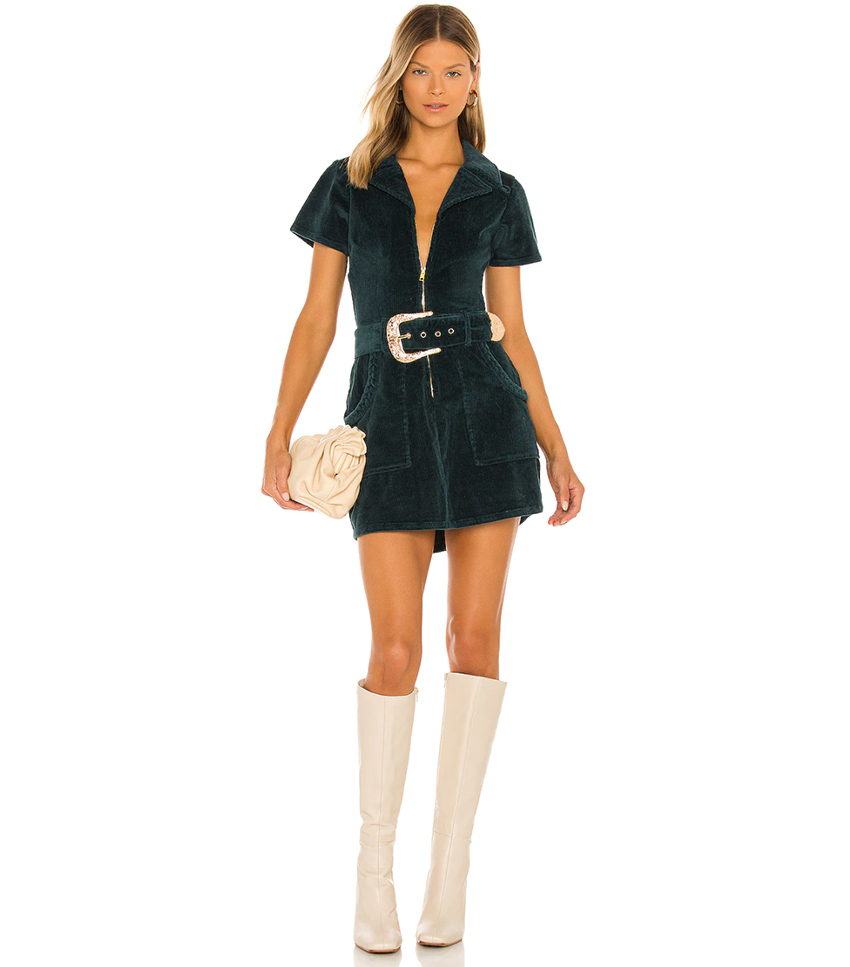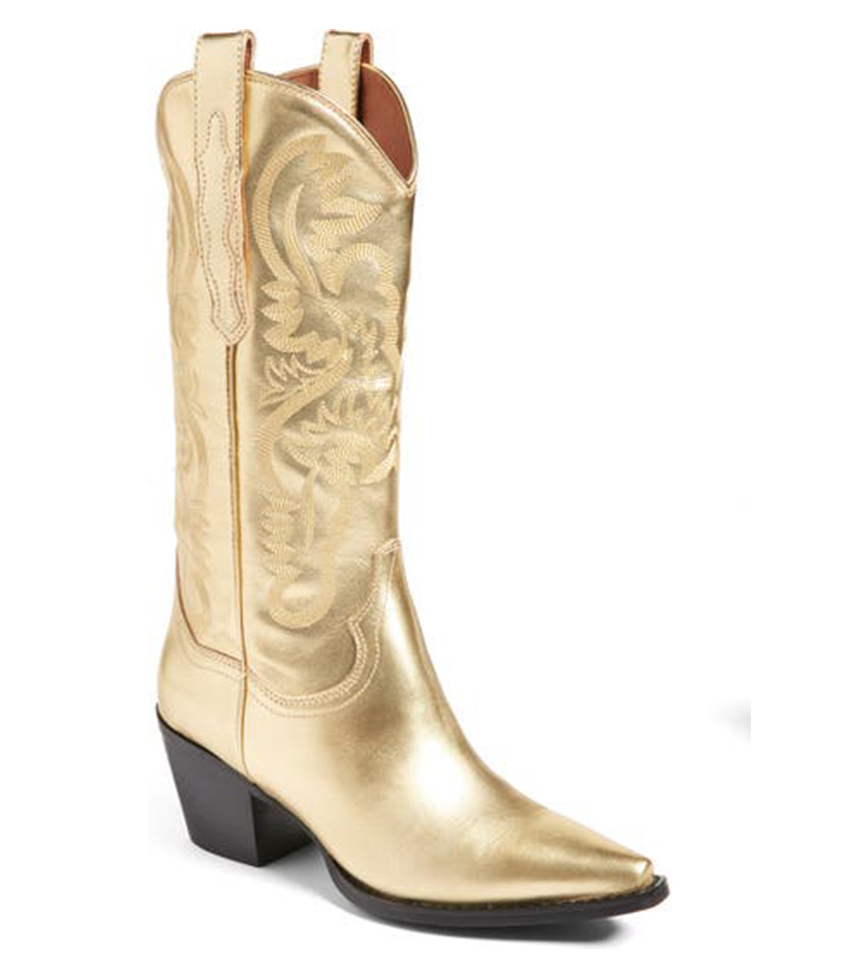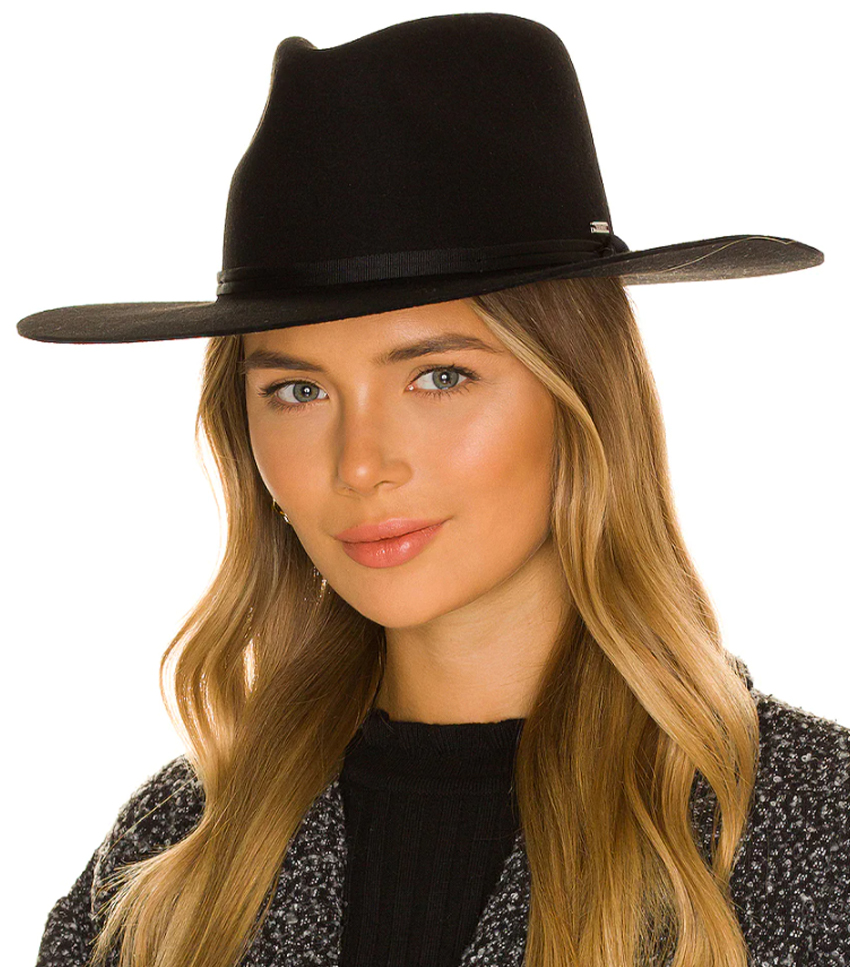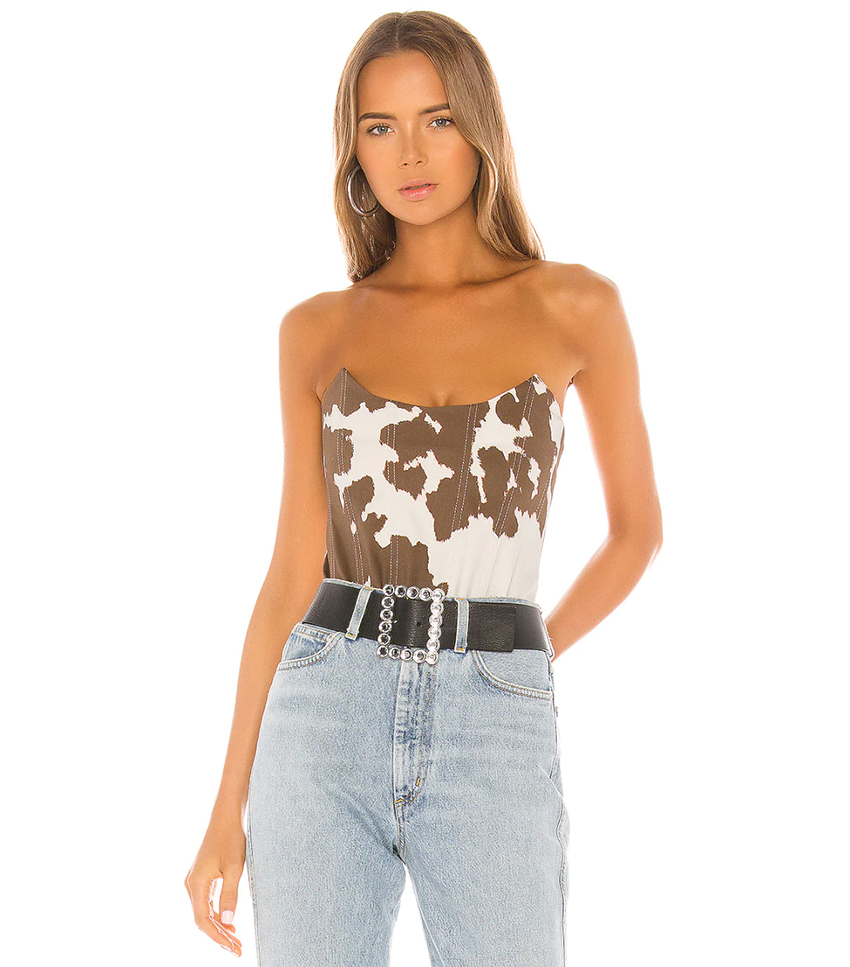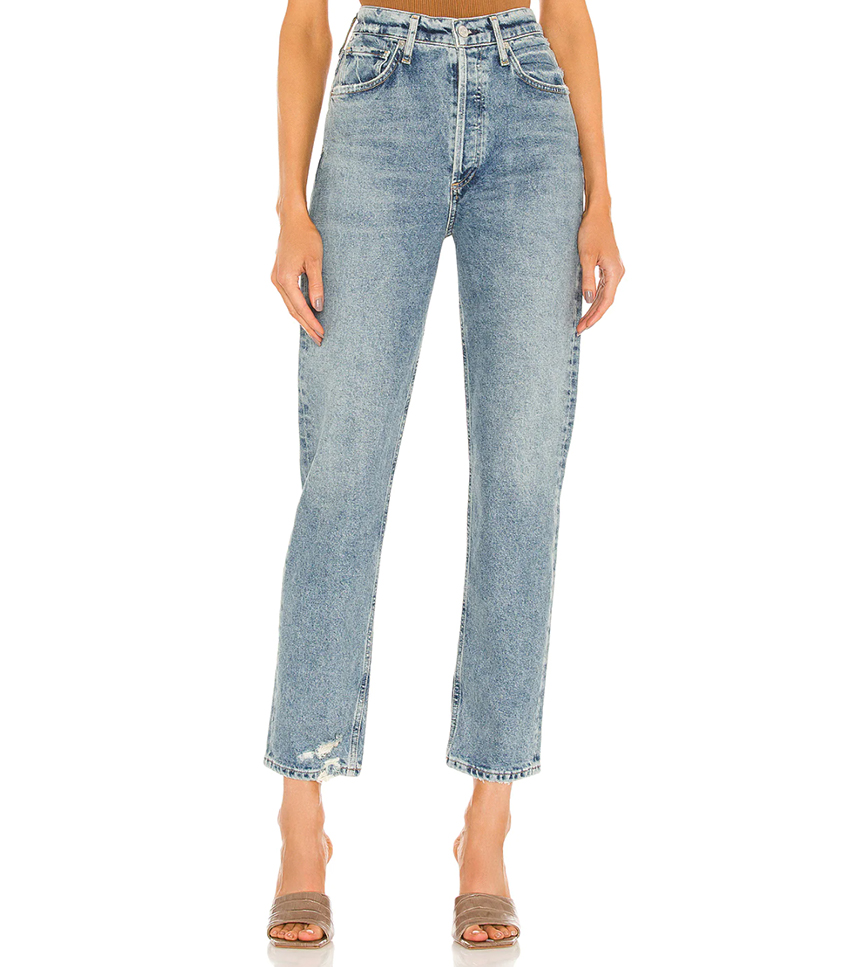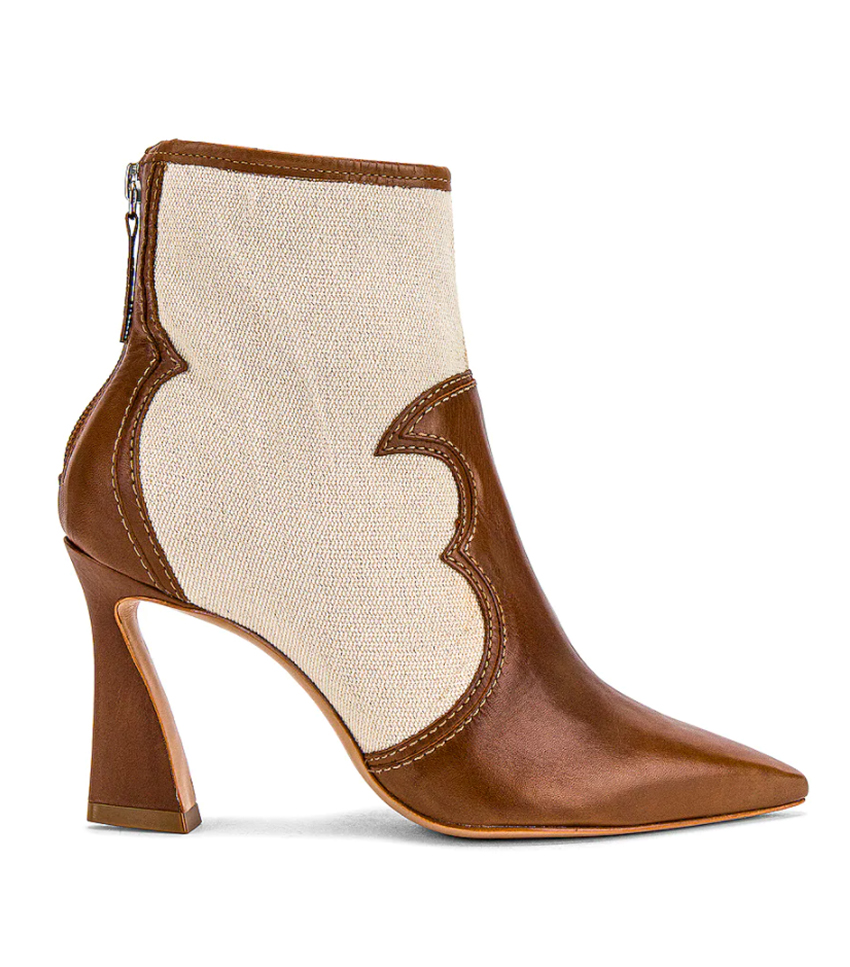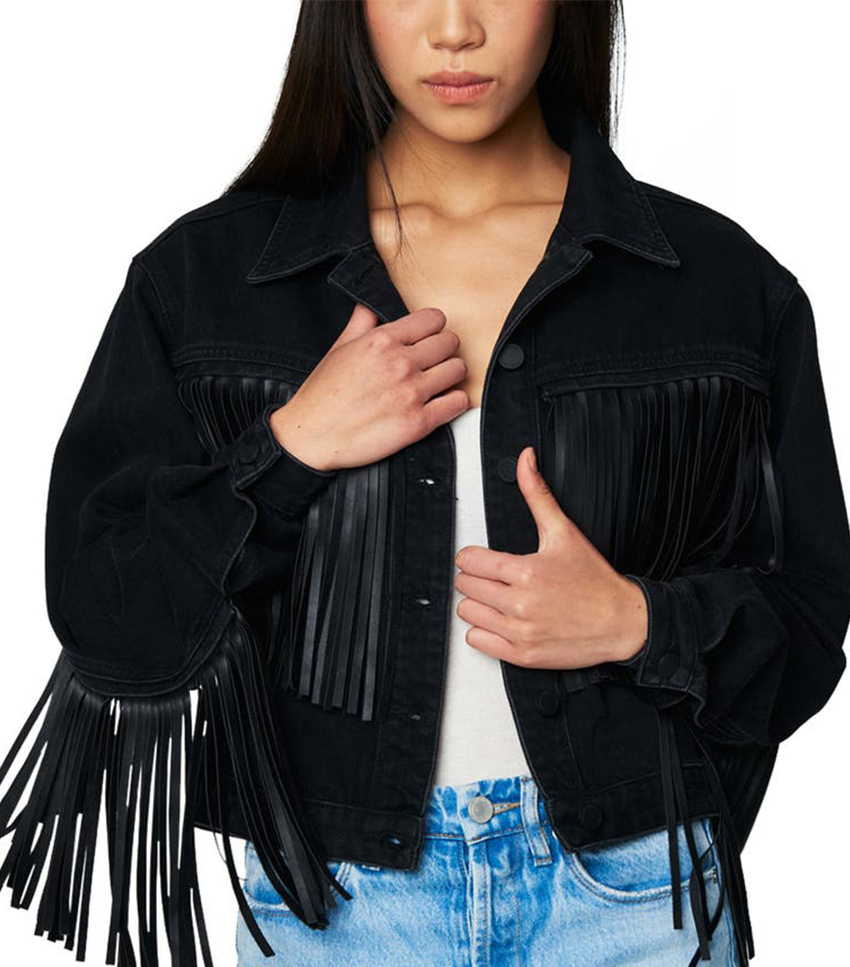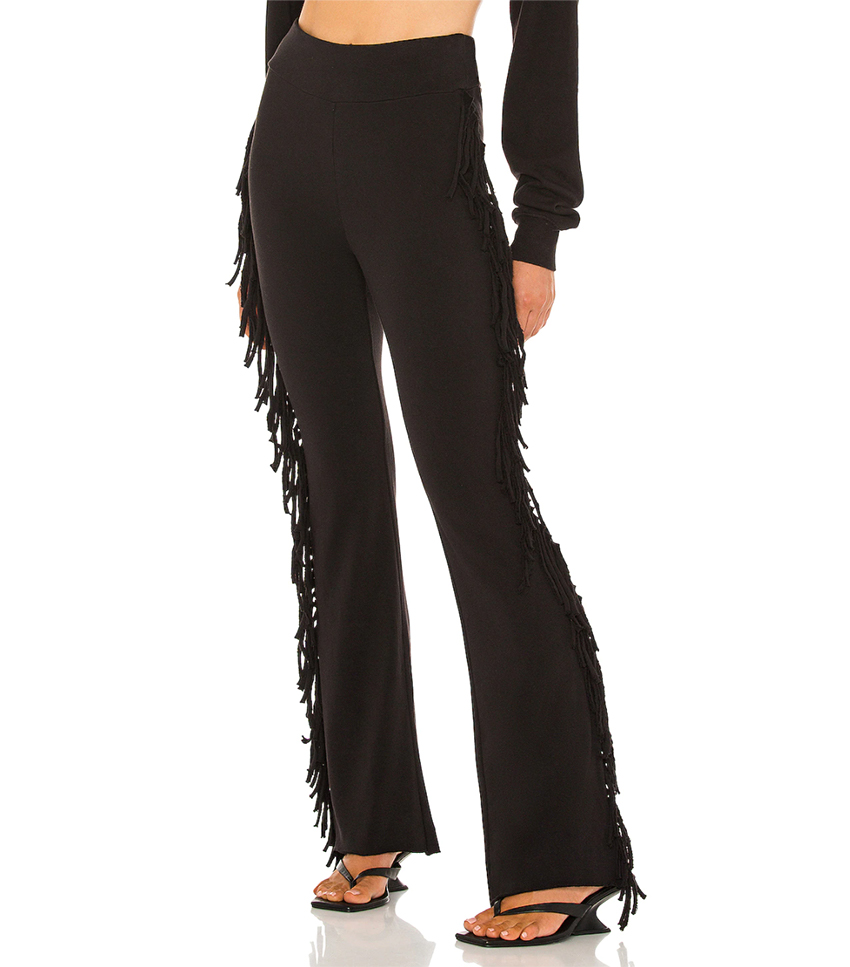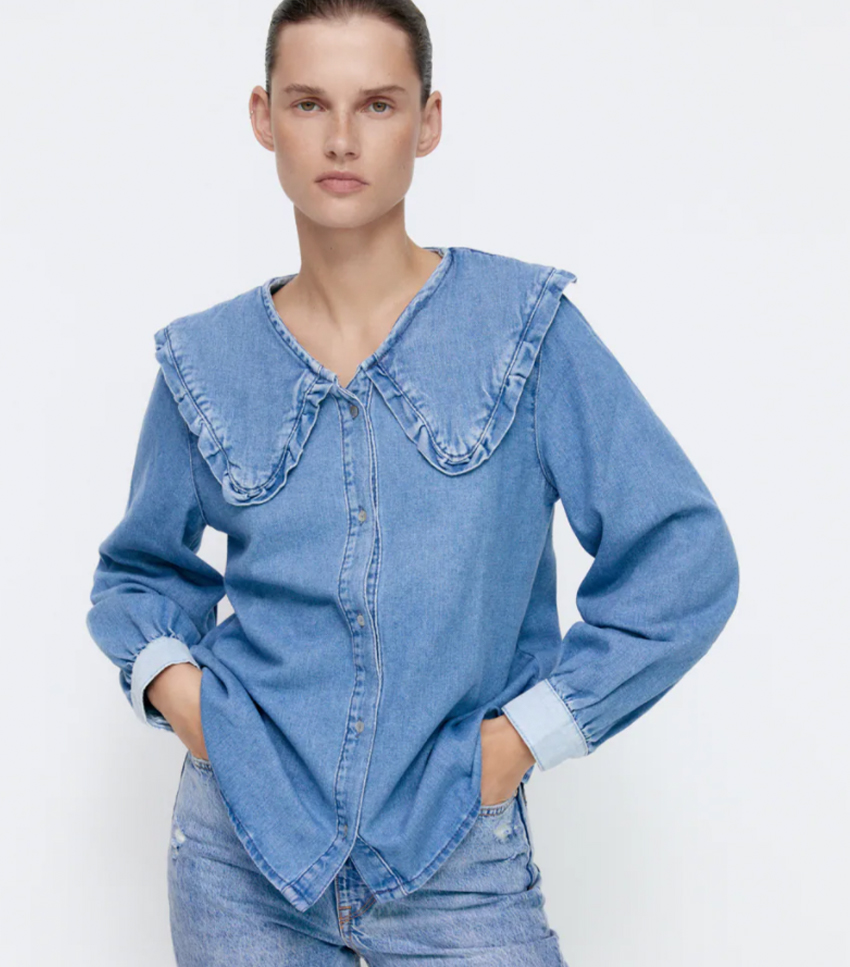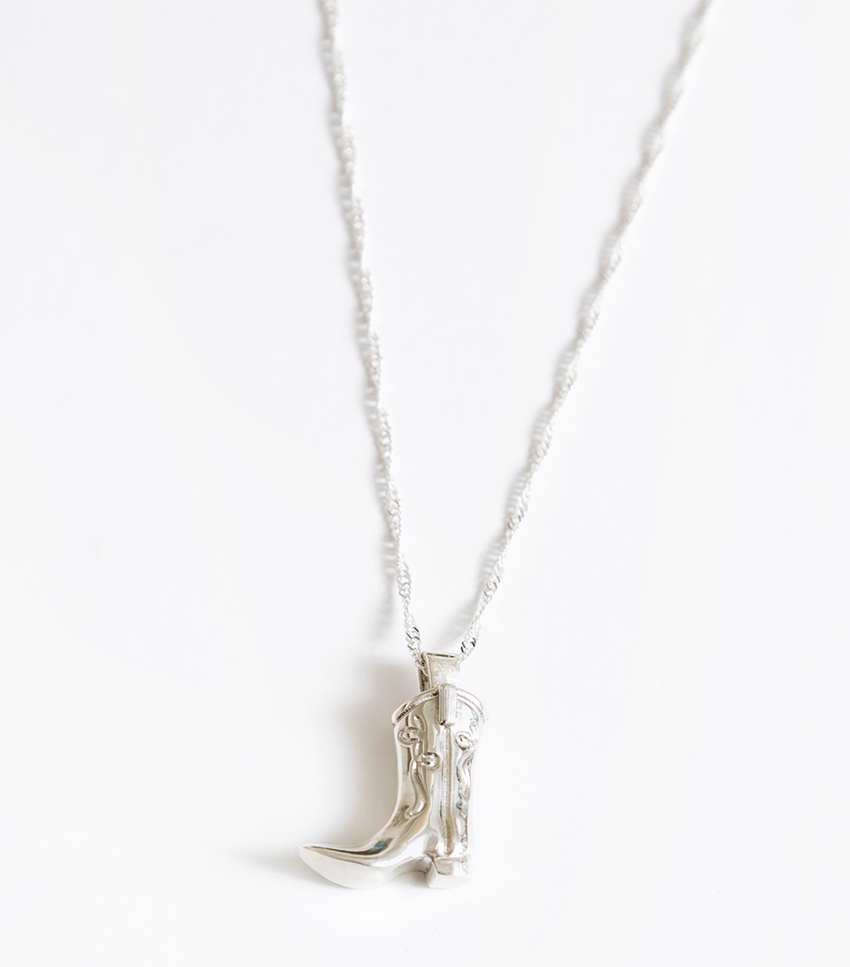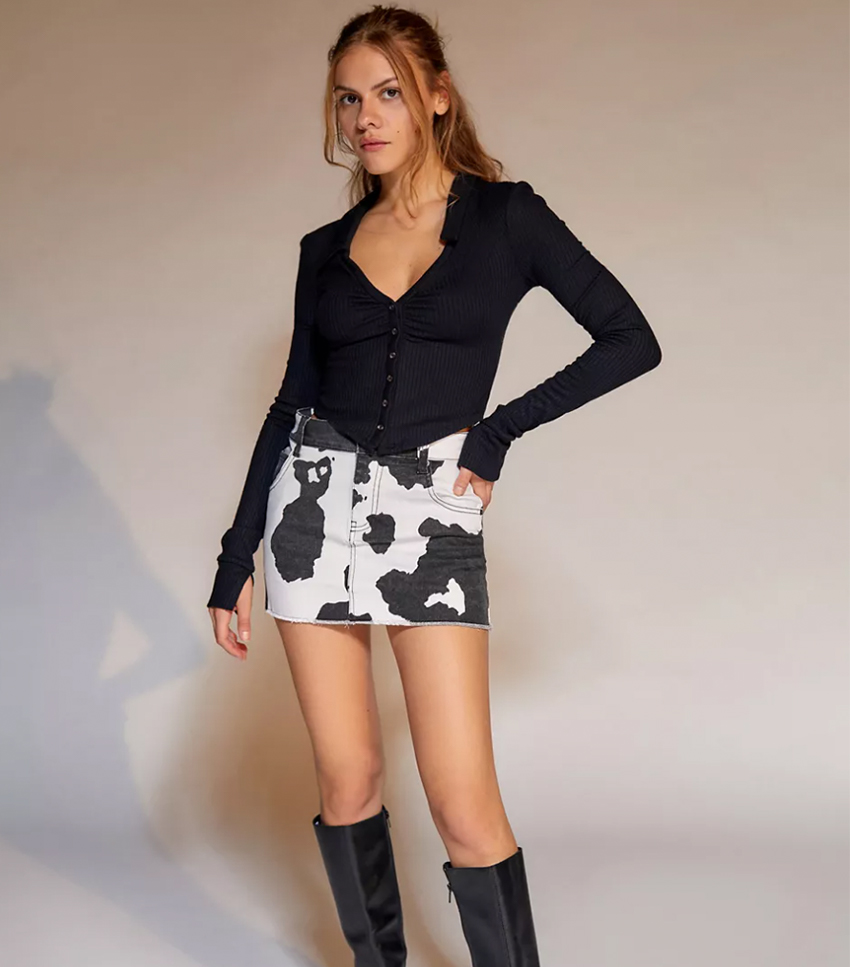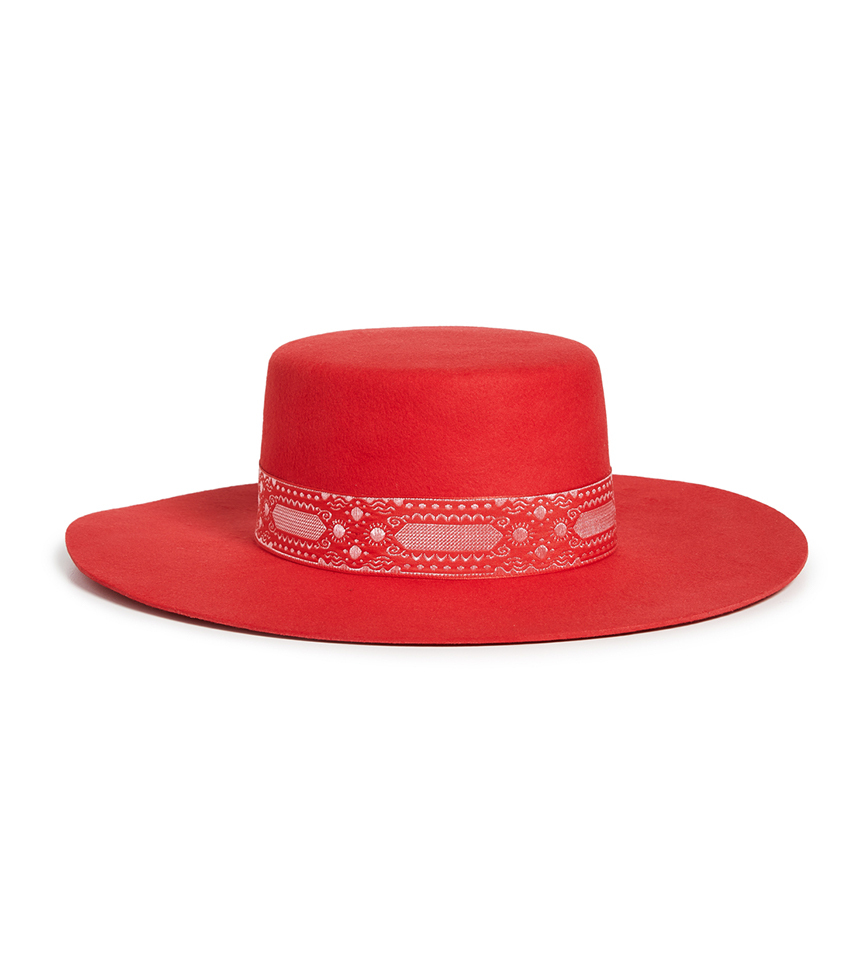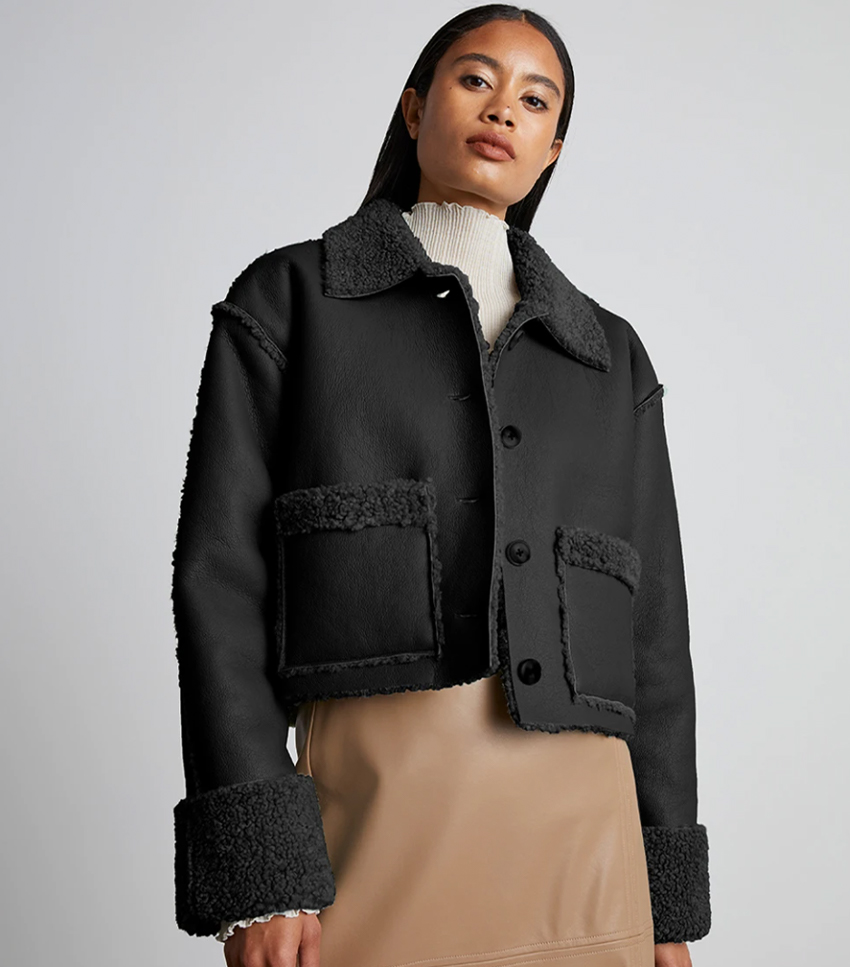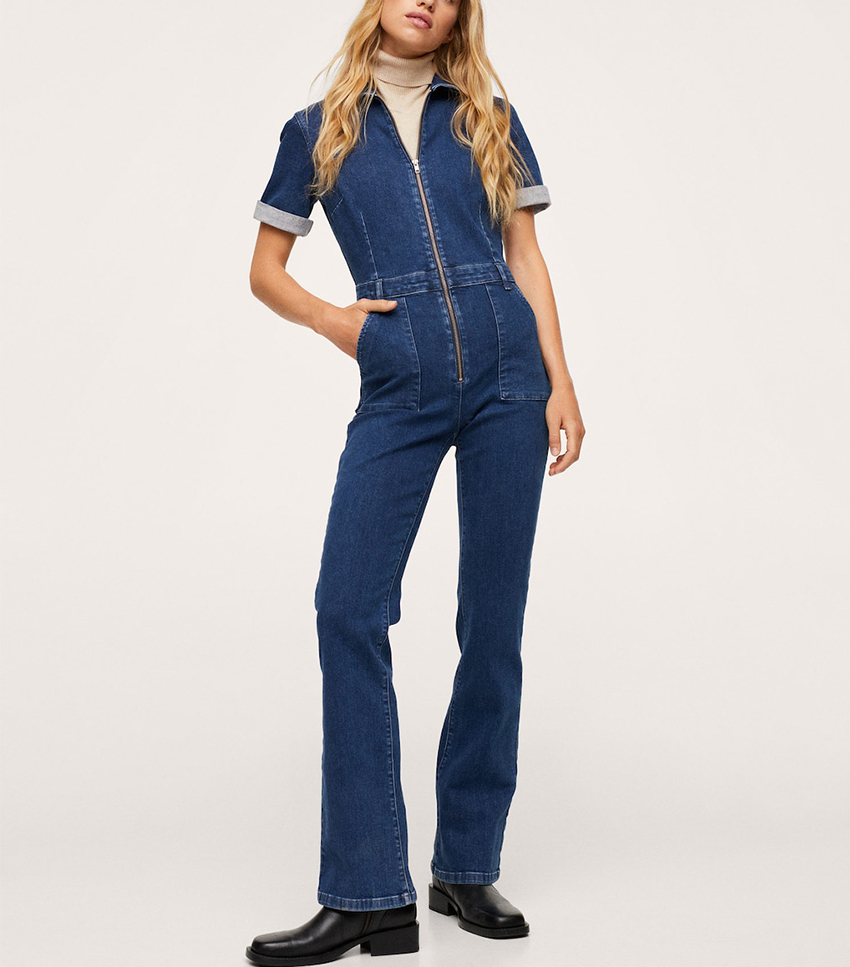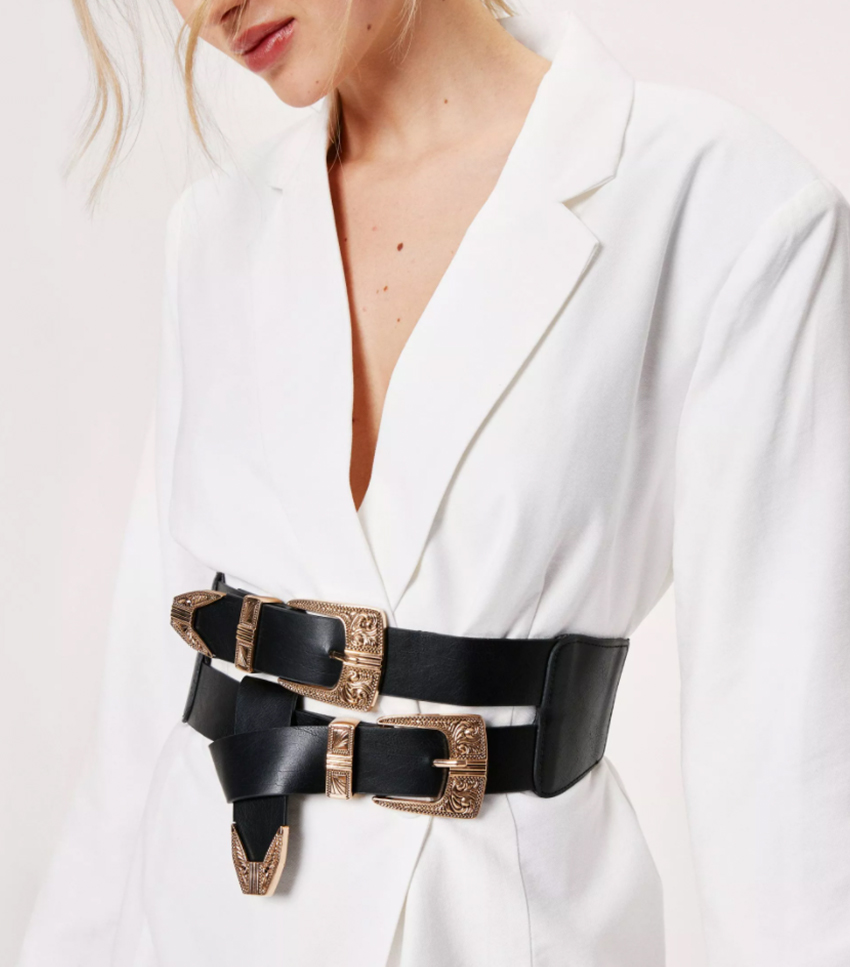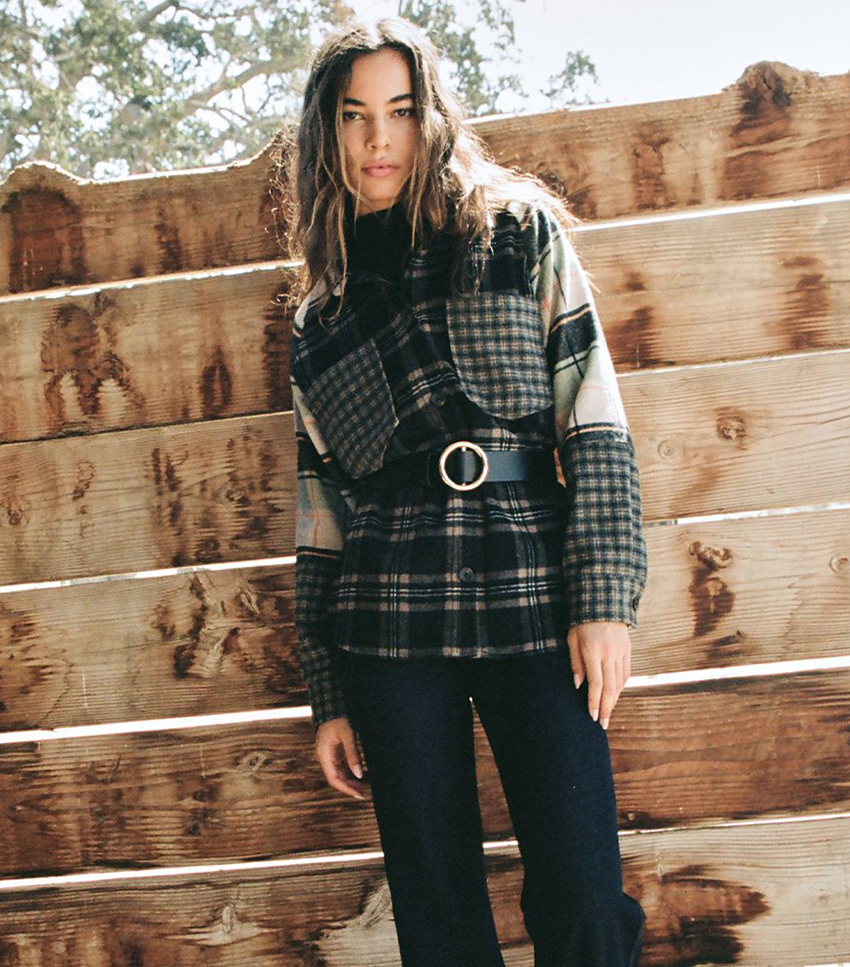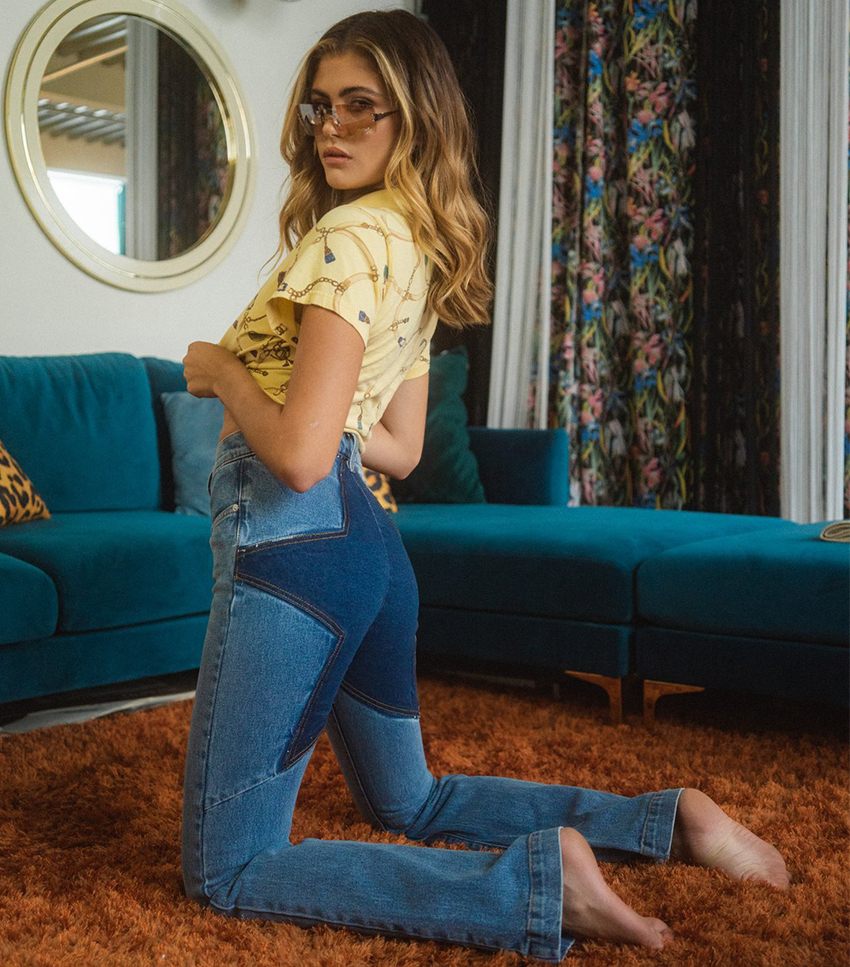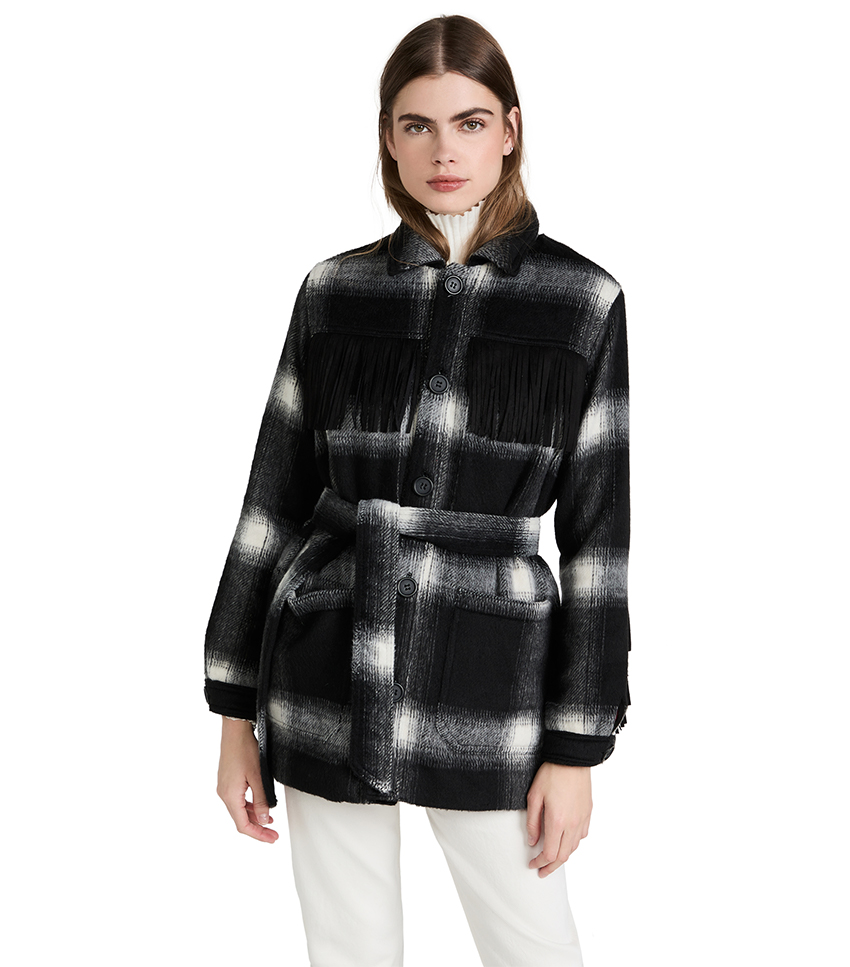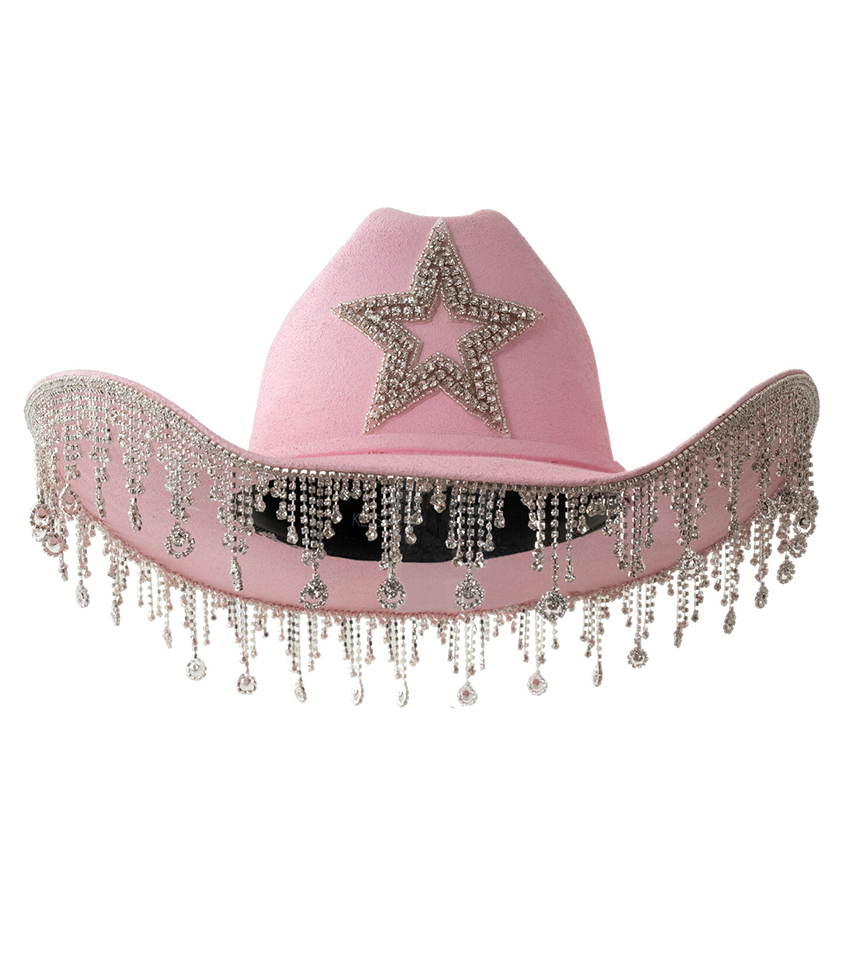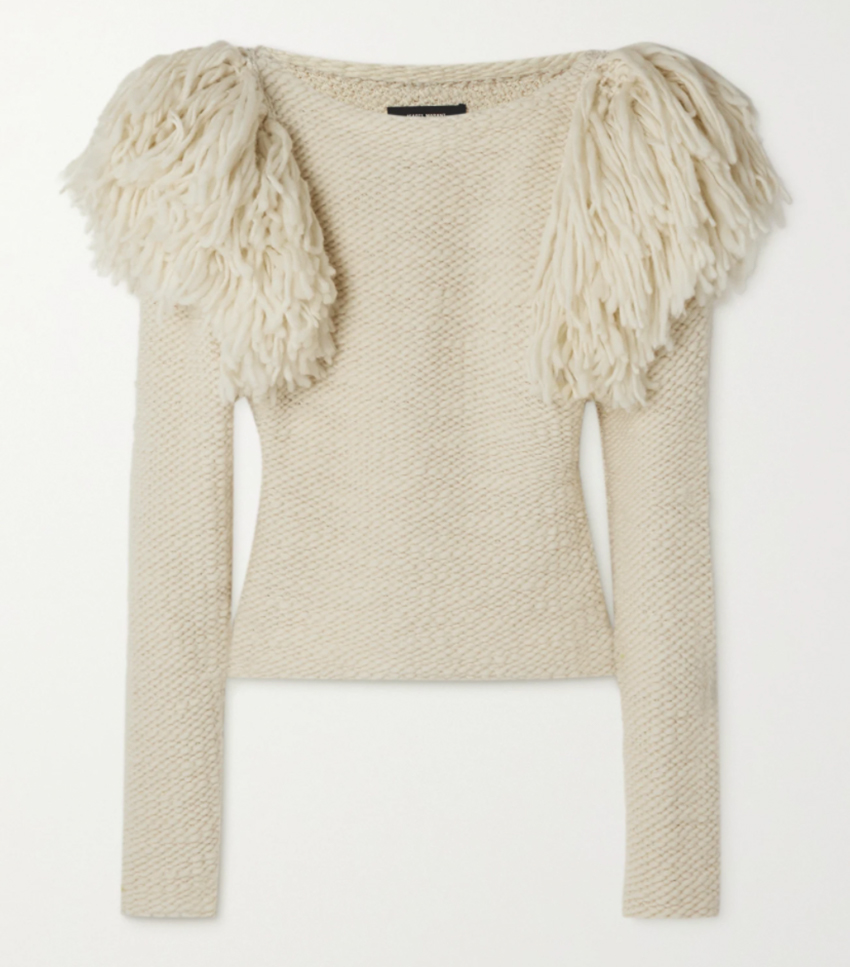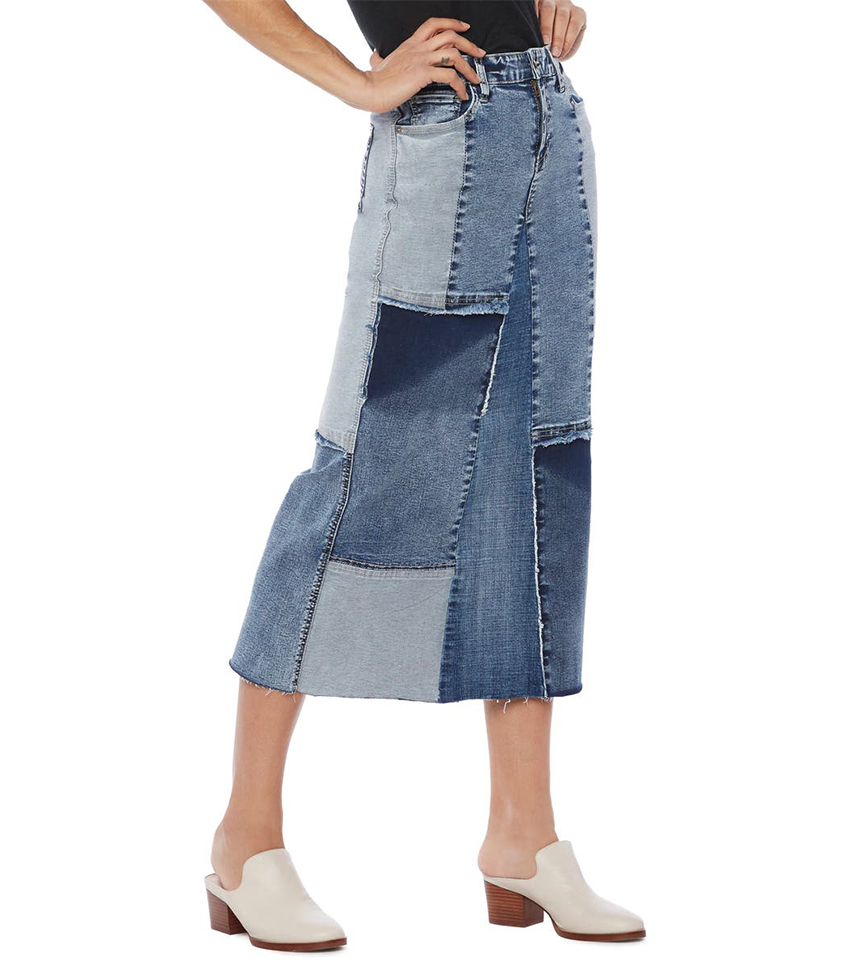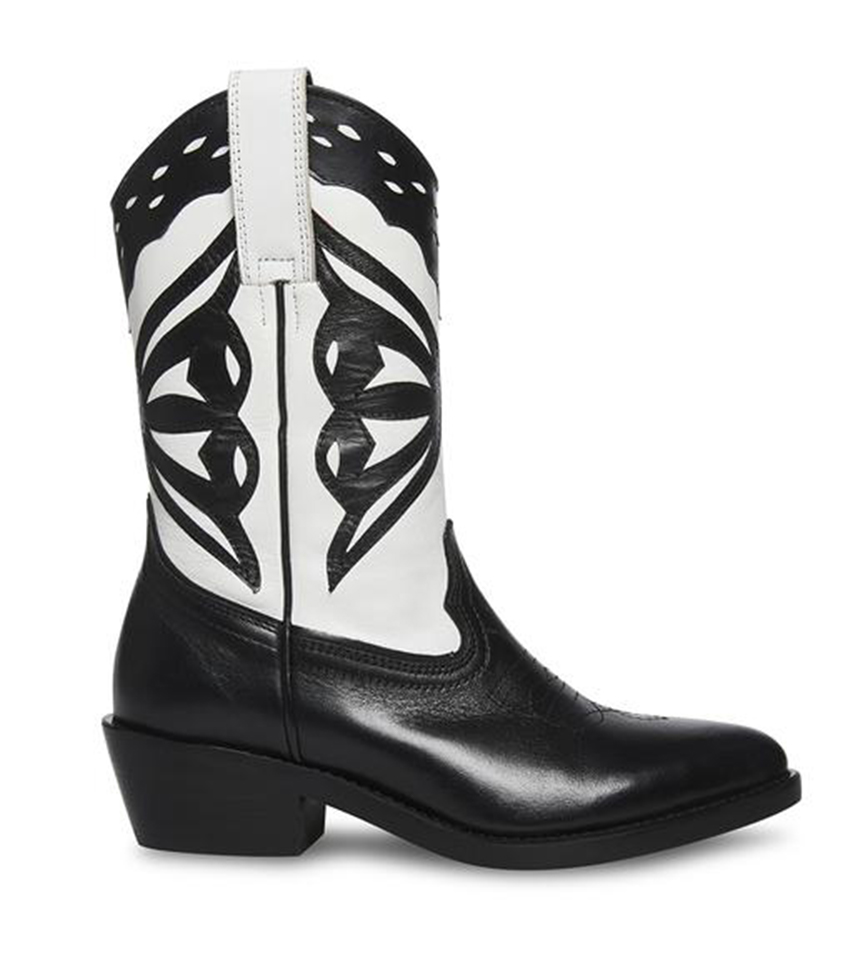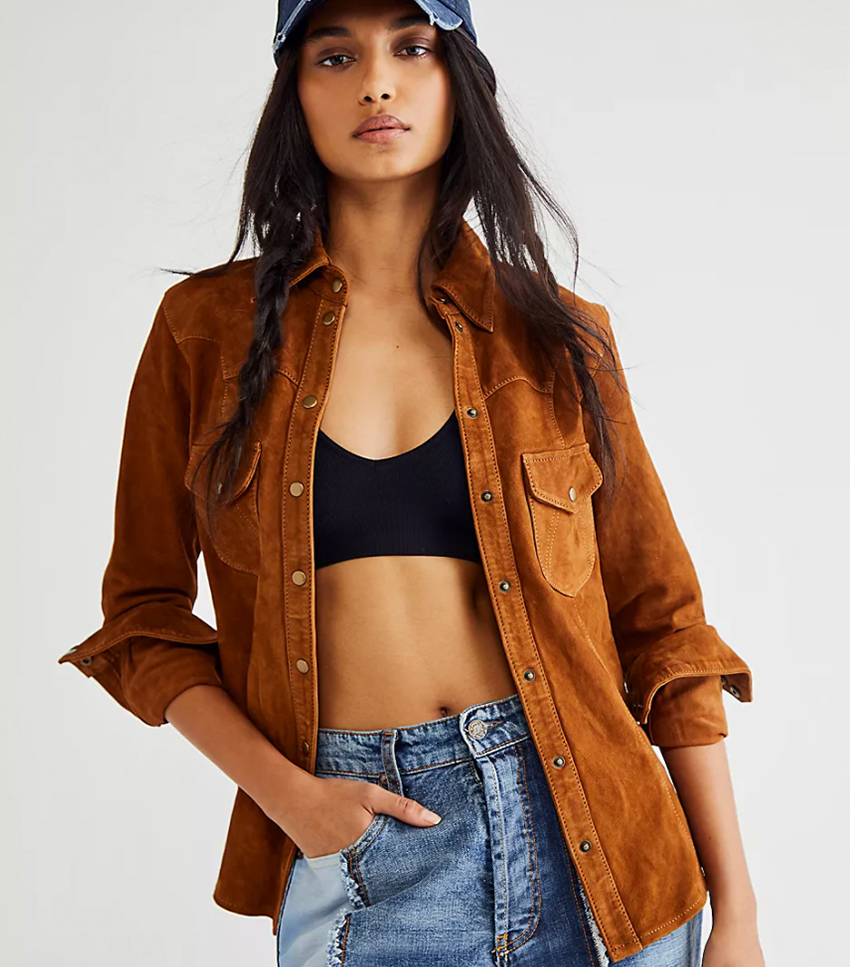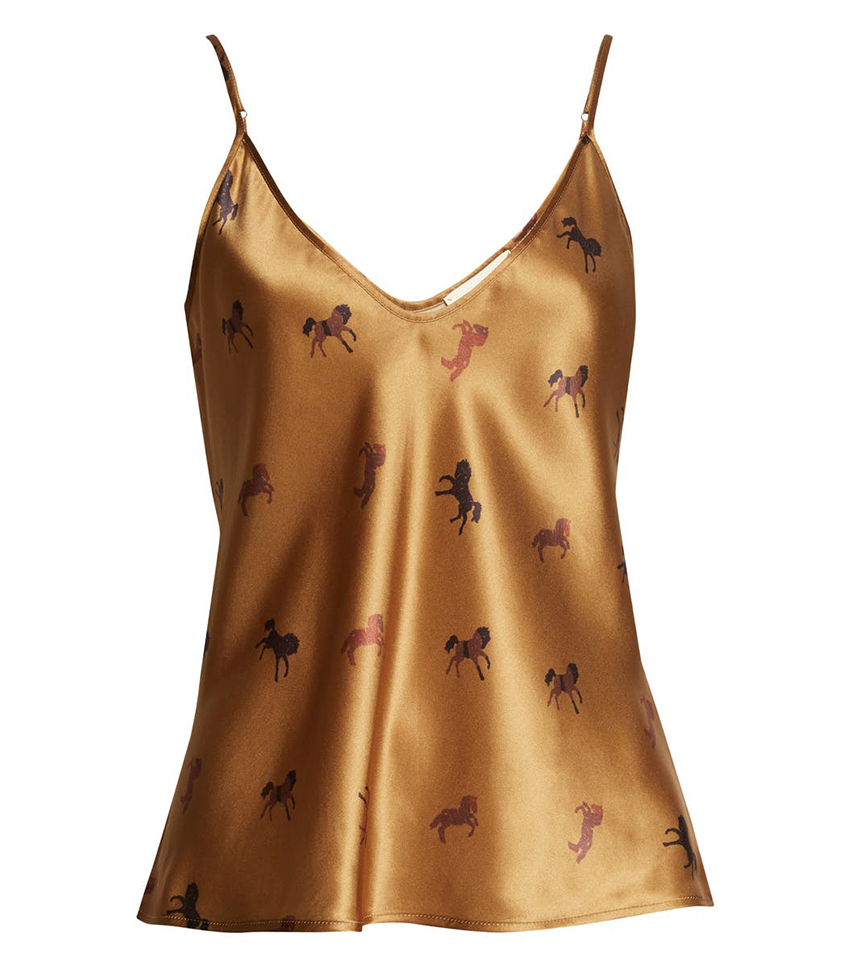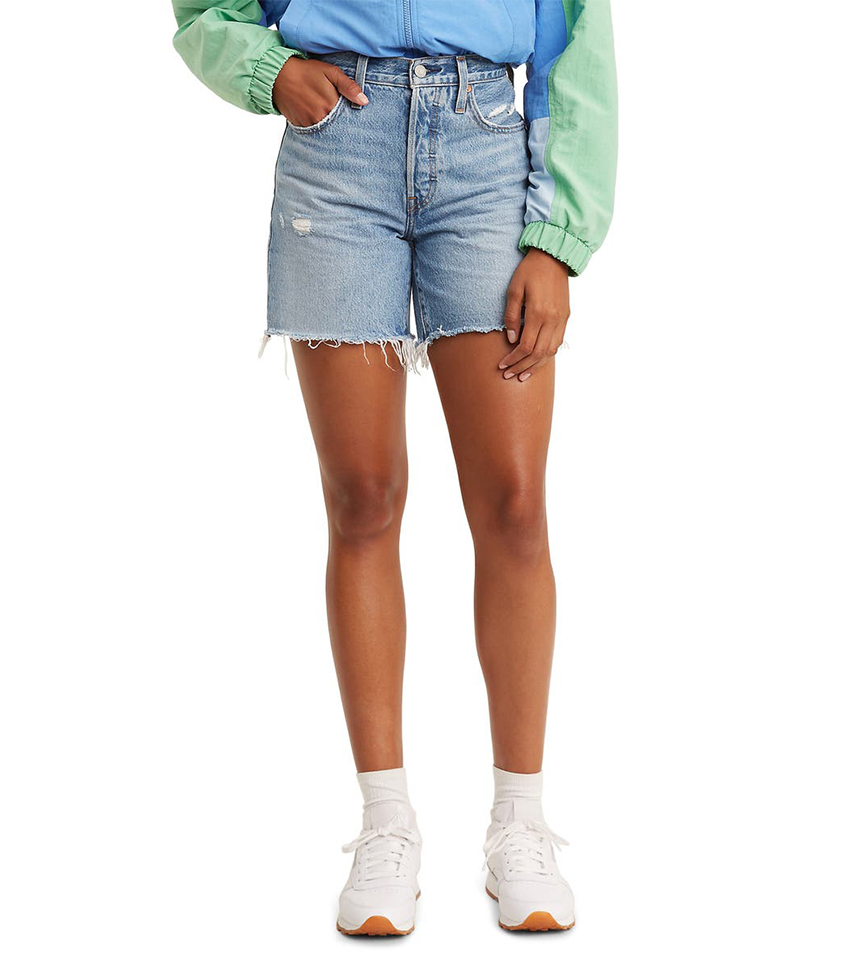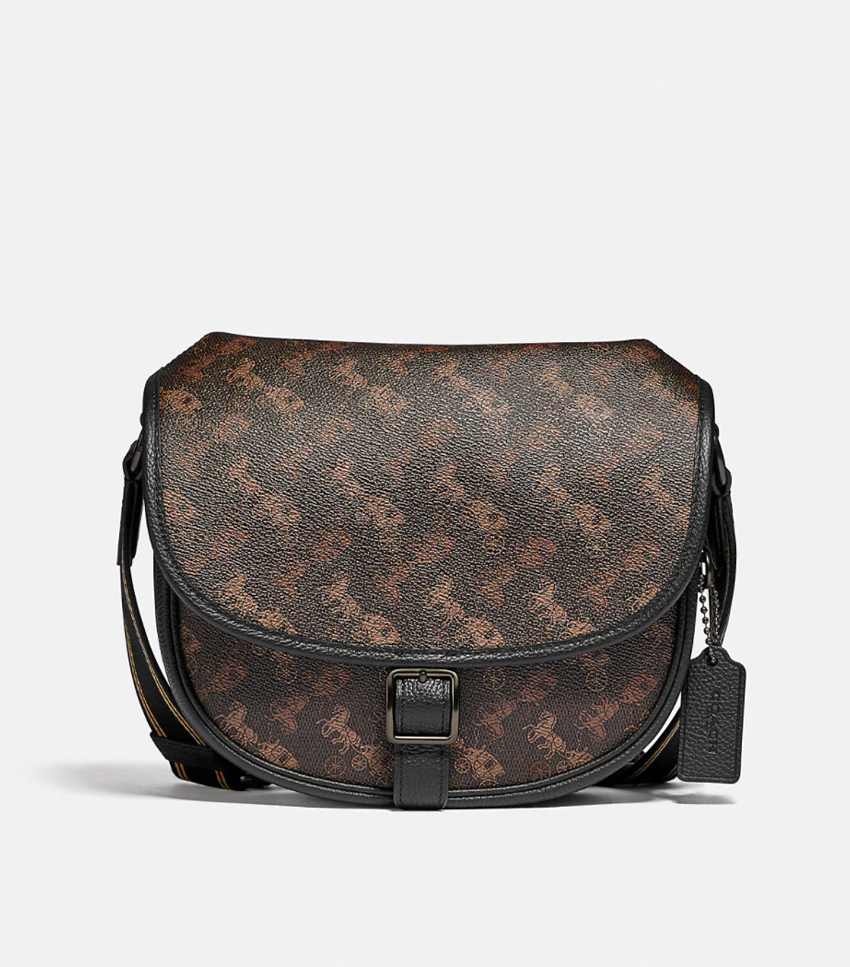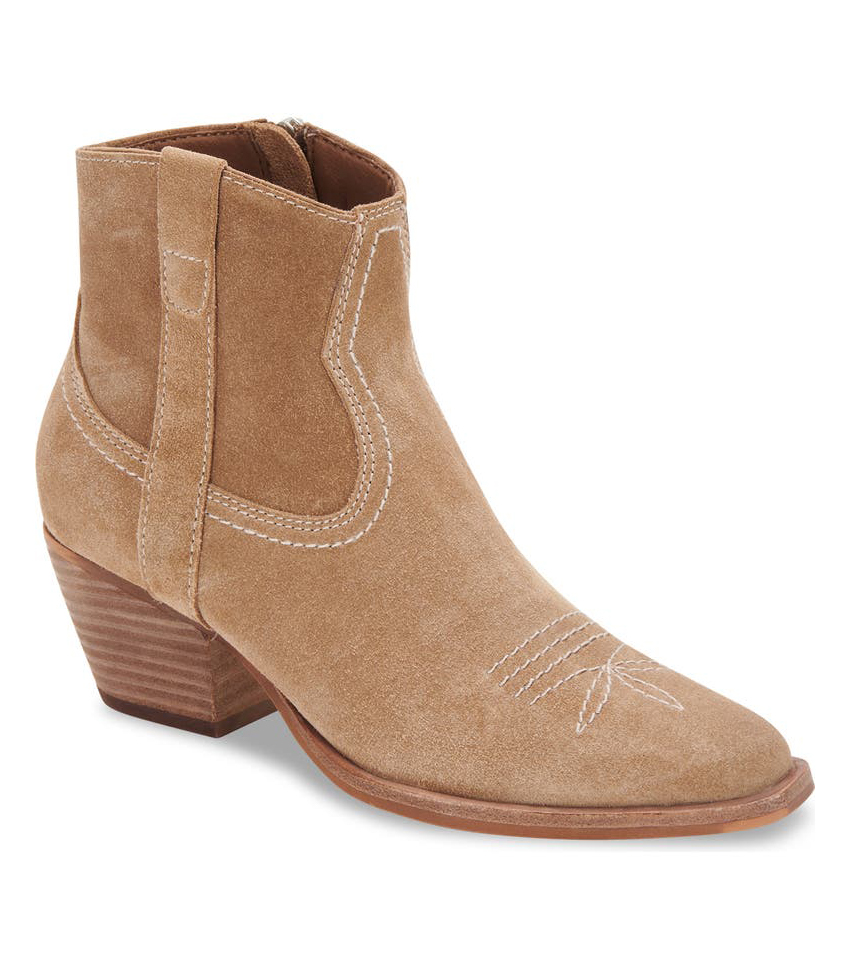Black Cowboys and Western Fashion Reign Supreme in Netflix’s Hit Film
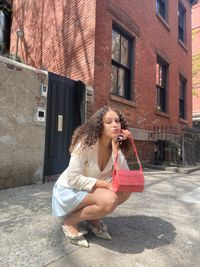

When you think of a cowboy, what’s the first thing that comes to mind? Perfectly worn-in boots? A wide-brim hat? How about blue jeans? Our ideal image of what a cowboy is has been meticulously crafted over decades by everything from films to fashion, and as viewers, it seems we "know” what constitutes Western identity. But Netflix’s most recent film, The Harder They Fall, asks us to take another look. Directed by Jeymes Samuel and co-produced by Jay-Z, the film is set in the Gilded Age and follows the typical arc of a Western revenge film, except for one thing: it centers around Black people. This casting is not typical of Western cinema, much less the historical and cultural narratives around who cowboys traditionally were.
Long before Beyoncé and Megan Thee Stallion channeled the Wild Wild West through clothing, Black cowboys actually did exist. It’s something that this film directly explores through its star-studded cast featuring Idris Elba, Regina King, and Zazie Beetz (just to name a few). But what makes this film even more unique is how seasoned costume designer Antoinette Messam saddled up a wealth of research and embedded it into every costume on screen. It’s no surprise that this film has surpassed Squid Games in viewership on the first weekend alone. Keep reading to hear Messam explain everything you need to know about the film. Fair warning: These costumes might just make you want to buy cowboy boots.
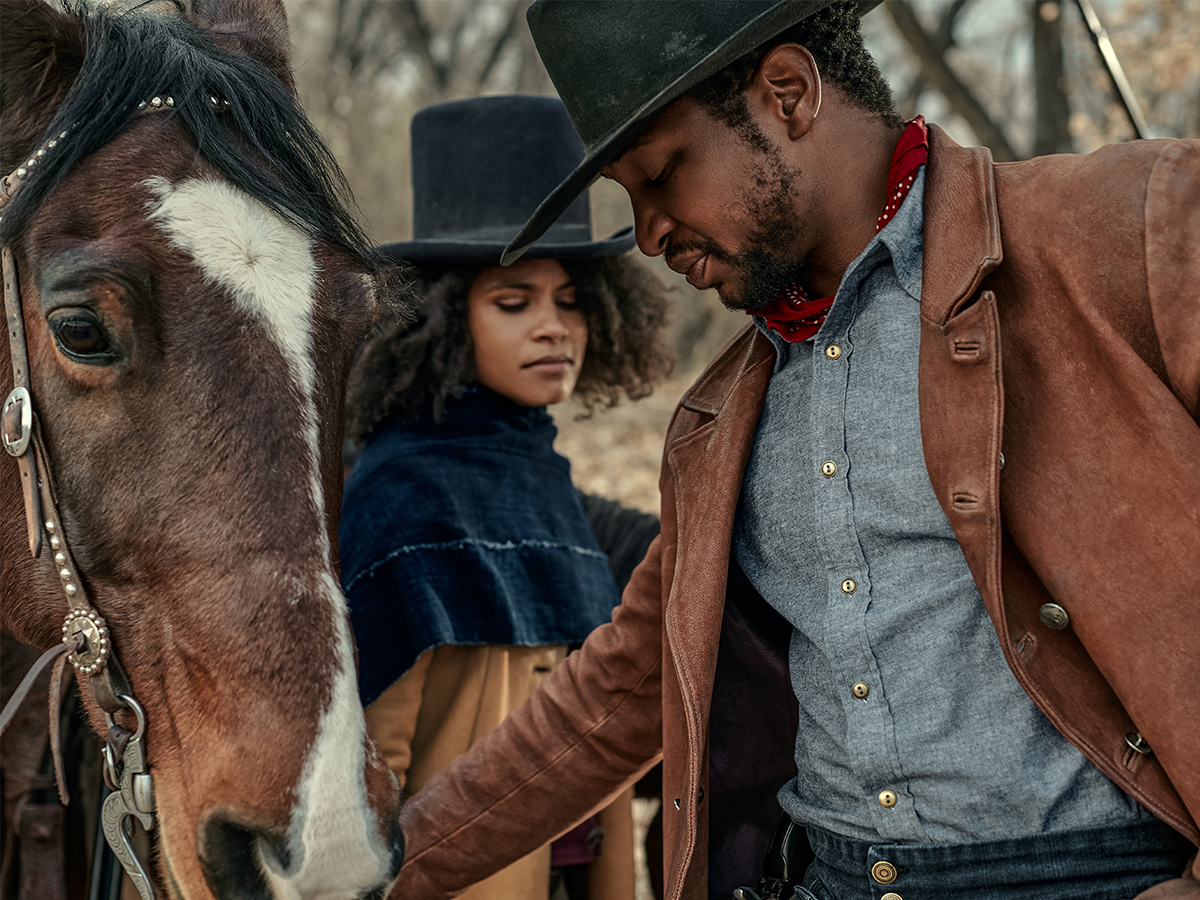
How did you get into costume design?
I’ve been costume designing for over 30 years, but I didn’t train in costume design or come up in theater productions. Despite Toronto having a big theater industry, I began my career in fashion as a stylist. I was styling for music videos and stills, so it was a completely different medium than costume design. Back then, I started buying for a costume designer, who later became my mentor, Delphine White. She encouraged me to start costume design and recommended that I be a part of MTV’s first drama tv series. From there, I went on to establish my career in Toronto and across Canada. It wasn’t until multiple producers and directors encouraged me to come to Hollywood and my son became an adult that I took the leap and moved to Los Angeles. It was an incredible shift in my career to not just work on the projects that came to my hometown but to be able to choose projects based on the project itself.

You’ve worked as a costume designer for well over 30 years. What have you learned since then?
I've learned that being flexible is important. In the last two films I worked on, I’ve now had to navigate to COVID-19 protocols on set, which can be challenging. When one of your lead actors gets COVID and is taken out of filming for 10 14 days, that changes the film’s schedule drastically. So you have to be able to regroup and adjust accordingly, which is a skill I’ve learned. I also think, in general, I’ve learned that as a costume designer, you have to think outside of the box and keep thinking outside of it. It’s not necessarily about keeping up with trends, but being aware of what’s happening not only in my immediate world but my outside world.
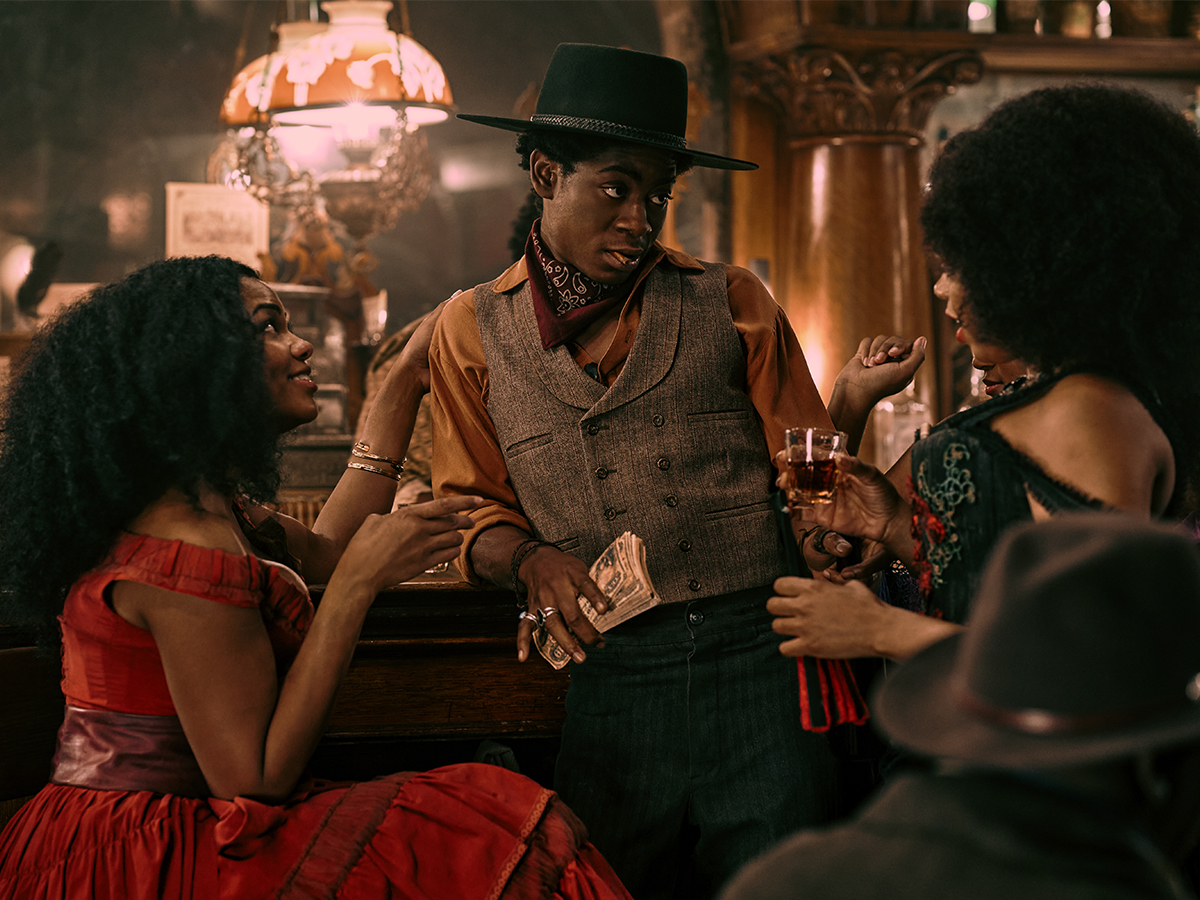
What was it like to pivot from styling music videos to costume designing for films? Did your creative process change?
You only get two minutes to make something fabulous in a music video. Whereas with long-format films you help tell the story through clothes and collaborate with the actors, the director, sometimes the studio, sometimes the network, sometimes producers, who all have a different vision for the look. As the costume designer, it’s my job to hear the voices, take in all the input, and help create something tangible and realistic. It was a learning curve at first, but I enjoyed it. I enjoy seeing the words on the page come to life. I still get excited when I see what I envisioned when I read the script come to life on-screen. Costume design is just like a child—you just watch it grow and grow up and materialize in front of you. And it's like, "That's my baby.”
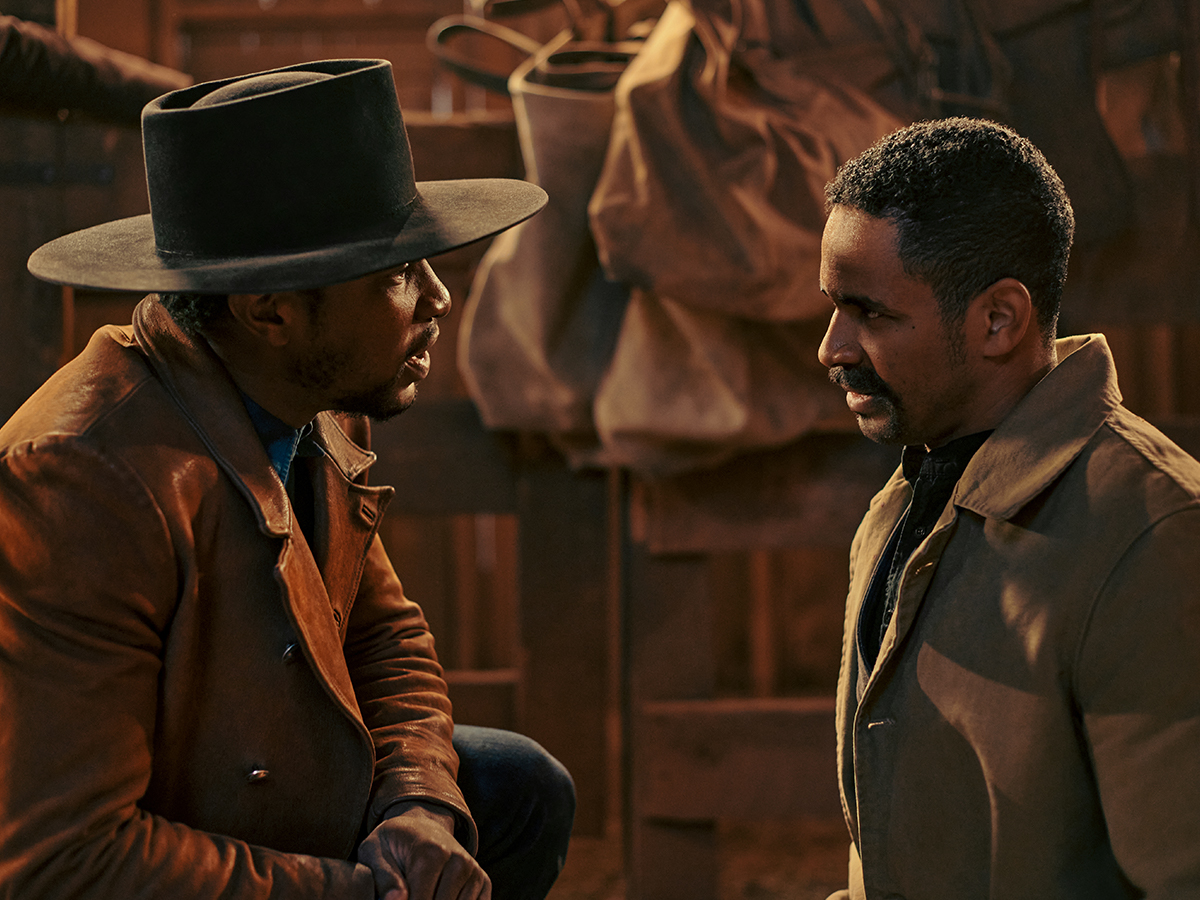
How do you balance your vision for the costumes in a film with everyone else's vision?
Well, each project is different. In the initial stage of the film, you're sharing your ideas with the director through the interview process. For The Harder They Fall, I came with ideas to share with the director, Jeymes Samuel, and the co-producer, Jay Z. They accepted them and asked me to push the envelope further. So it’s always a bit of give and take to take the costumes to a whole new level.
Why The Harder They Fall? What about this project interested you?
I love a challenge. At this stage of my life and my career, the fact that I'm still able to learn and do new things is always, first and foremost, what's most top of my list. And I've never done a Western before, so that was the draw to this film. Researching the costumes for it was like going back to school—it's a whole new world for me.
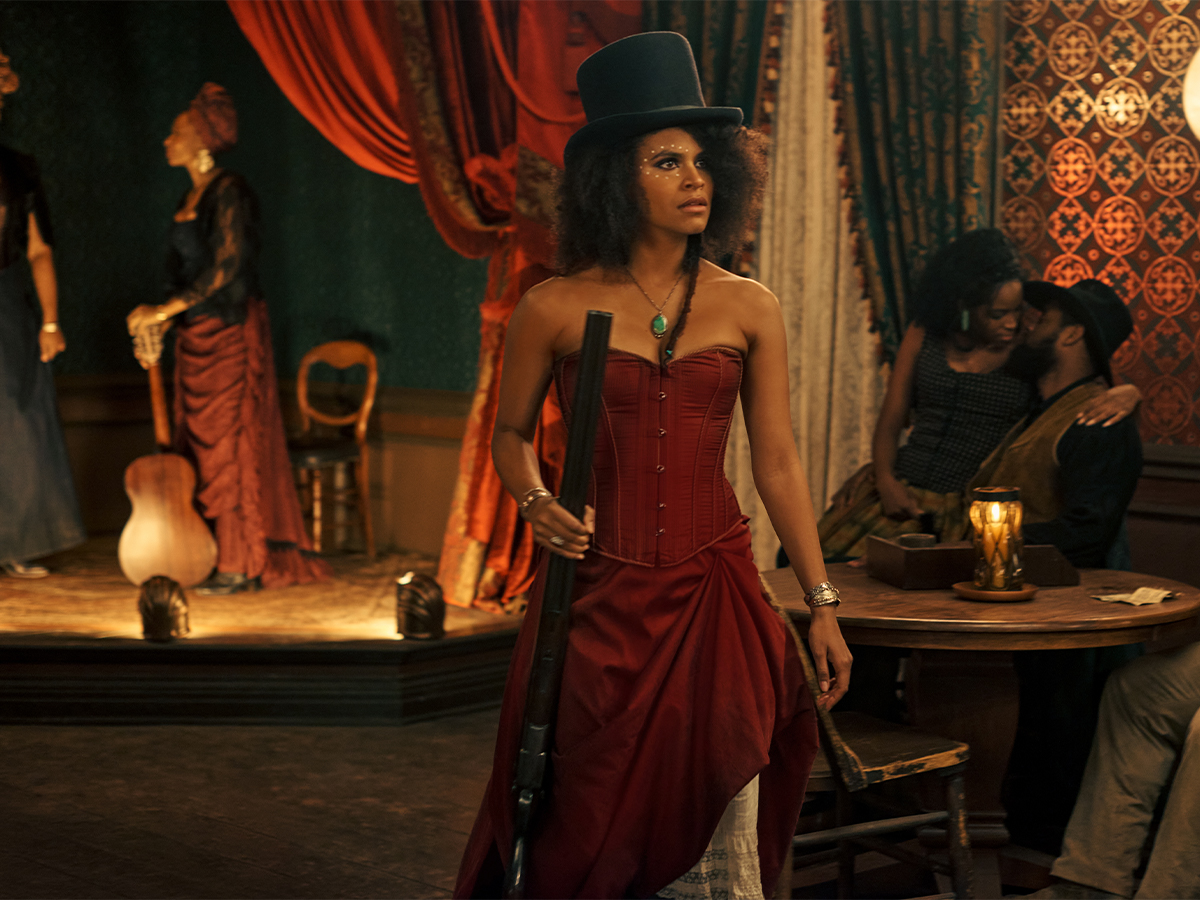
History has long been white-washed and often male-centric. Why do you think this film is important to see?
I think this film is so timely and so necessary. You know, it's empowering to have this revelation through research and the film itself that these people existed—Black cowboys, Black towns. Blackness existed in a world steeped in anti-Blackness. These people were a significant force in the West and history—even if we weren’t taught that. And they had their own individual style. I bought so many books for researching this project: Victorian books, Gilded Age books, reconstruction books. And what was so enlightening about the research is that there are so many images of Black cowboys and Black people that show they weren’t the downtrodden people we’d assume they were. These people were proud. They were strong; they lived in their own towns that they built from the ground up. And I think that message is critical to show because we have not seen that in other Western films before this.
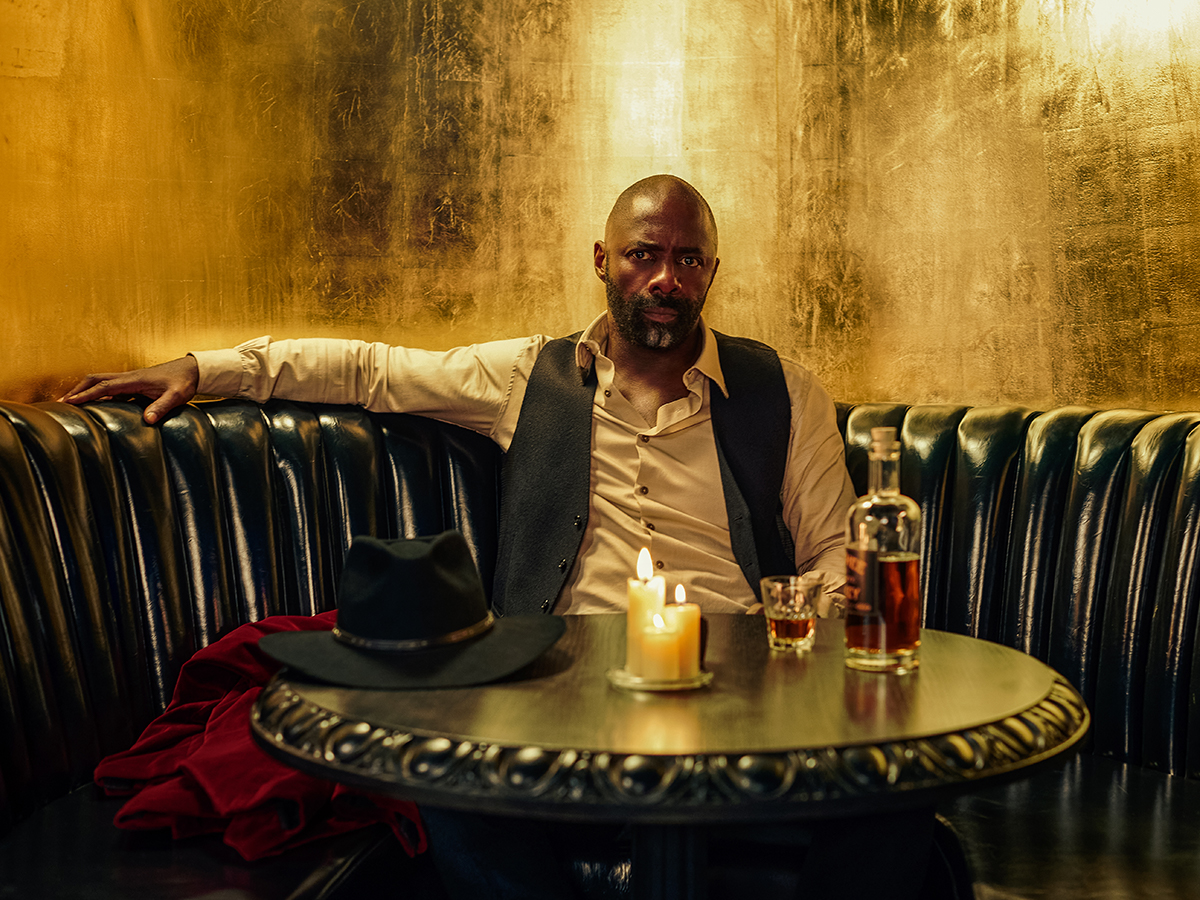
This story is set in Texas in a period where African Americans only gained their freedom in 1865. How did you want the costumes to reflect that specific moment in time?
Well, it's interesting you say that because we all have a particular idea of what the Gilded Age is, but it was this point in time that was post-slavery and we saw a mass-migration from the South to the West. Not everybody went North, and some people went West in the hopes of capturing their land. And that’s what Jeymes wanted to show, is that these towns were created, and even if they were later burned down by white mobs or repossessed by the government to make room for railroad development, these Black towns and spaces existed.
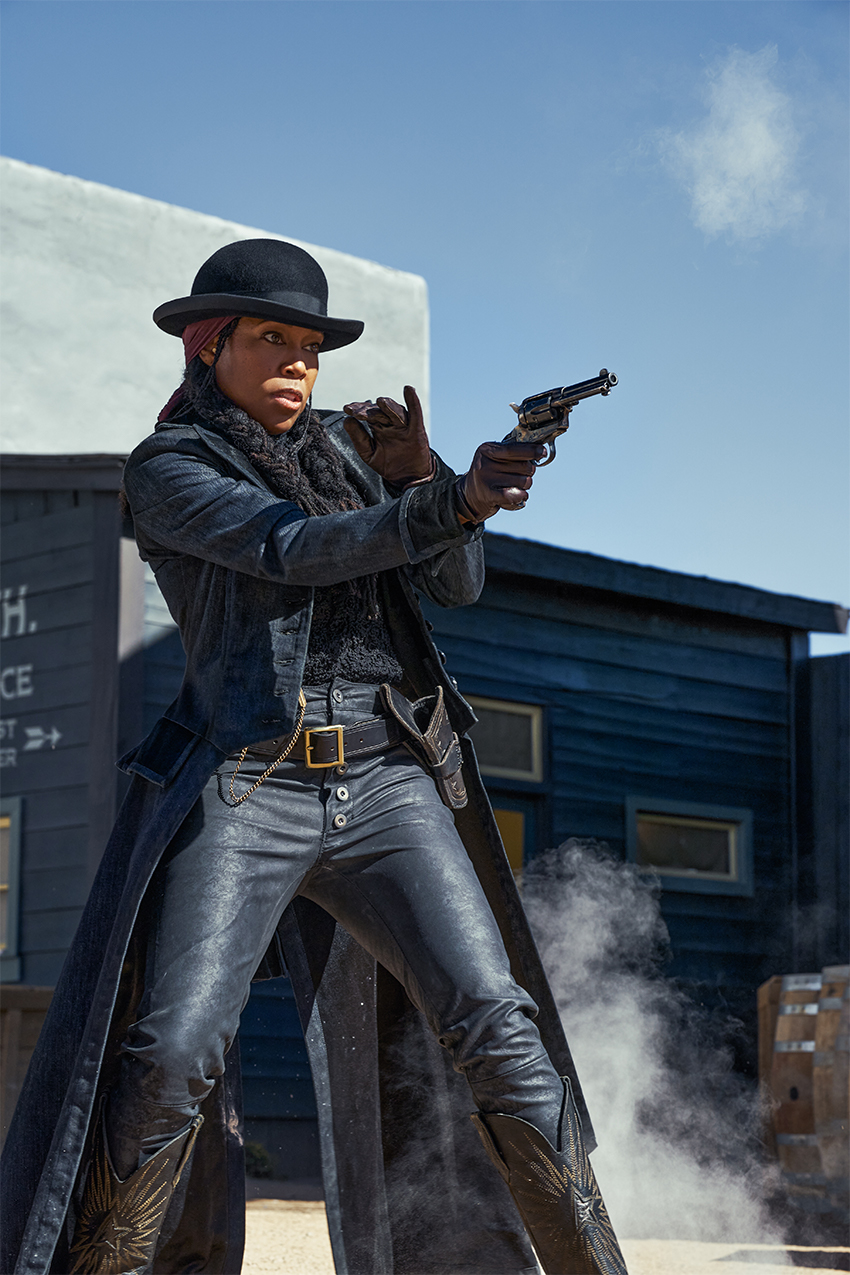
What stands out the most about the costumes is how they so distinctly can tell viewers the social standing of each character. How did you research what a cowboy would wear versus a sheriff or a salon artist?
I don't think I've researched as much as I did on this film. The part that was so exciting was how many African American and African references could be found of people in that time. It’s not like I had to swap out the people’s faces underneath the clothes—they existed. And that was the most incredible part—to find an image of a wealthy merchant, or Queen Victoria’s great-granddaughter, and see them, and think, "Oh my God, they look fabulous.” To see a wealth of imagery and have all the costume’s mood boards be filled with Black people—not reimagine white people as Black people—was incredible. And you see that reflected in the costumes. I wanted to show the vastness of experiences through the outfits, so you have the townspeople of Redwood, which is Trudy’s (played by Regina King) town, which is more opulent; it’s like the Black Beverly Hills of these two cities. So you see a lot more characters wearing luscious satin fabrics, velvets, and vibrant hues. Versus in Douglas County, you see more organic fabrics, indigos, leathers, suedes, and patterns.
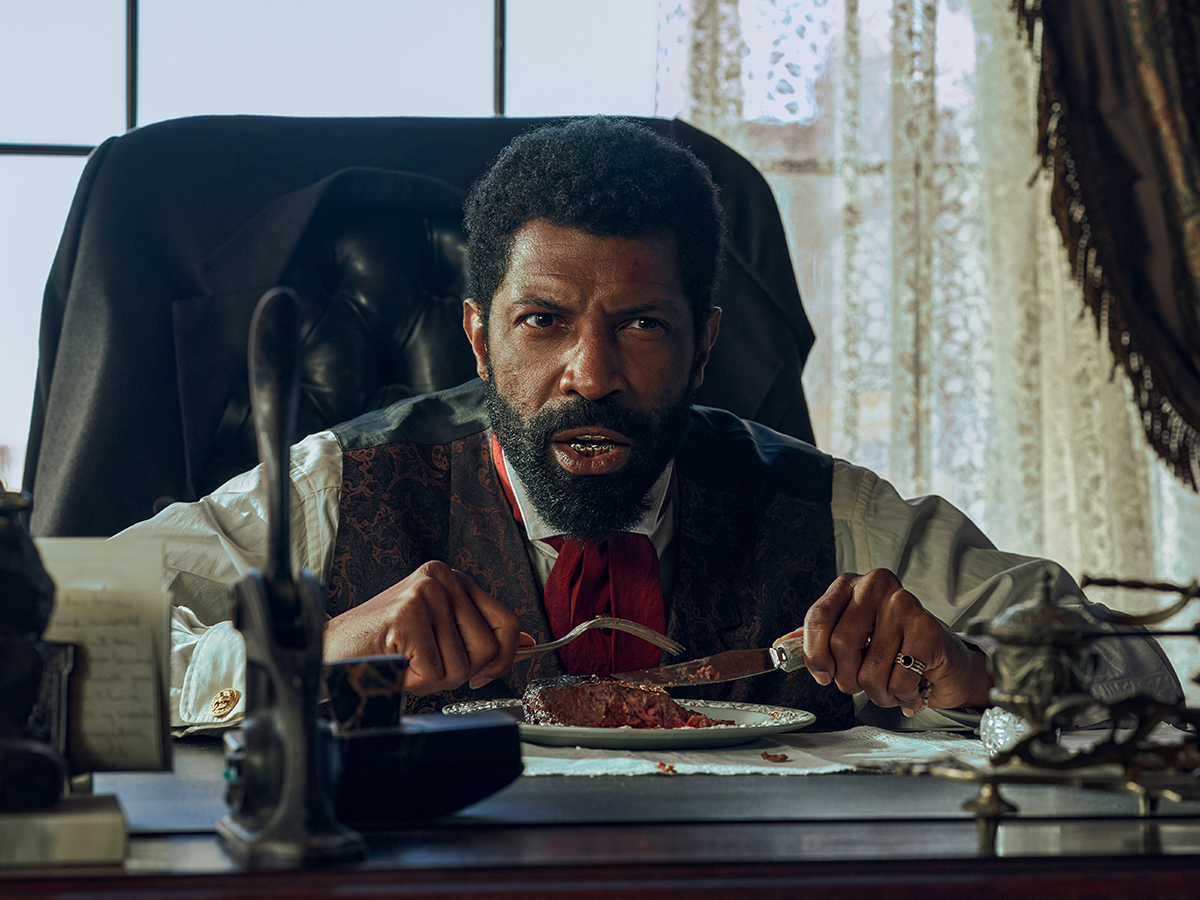
It’s so intriguing that you could find so much reference imagery because typically, that’s not something we learn about growing up. What did you learn from working on this film?
I'm Jamaican-Canadian, but even for me, it’s hard to admit that I didn’t know the entire history of this time period. I knew Black people existed, don’t get me wrong, but it was so interesting to find images of the gold rush. And it was so mind-opening to learn that California had some of the wealthiest Black communities in the United States at that time. Learning about Black history in that way and sharing that with this audience is so special.
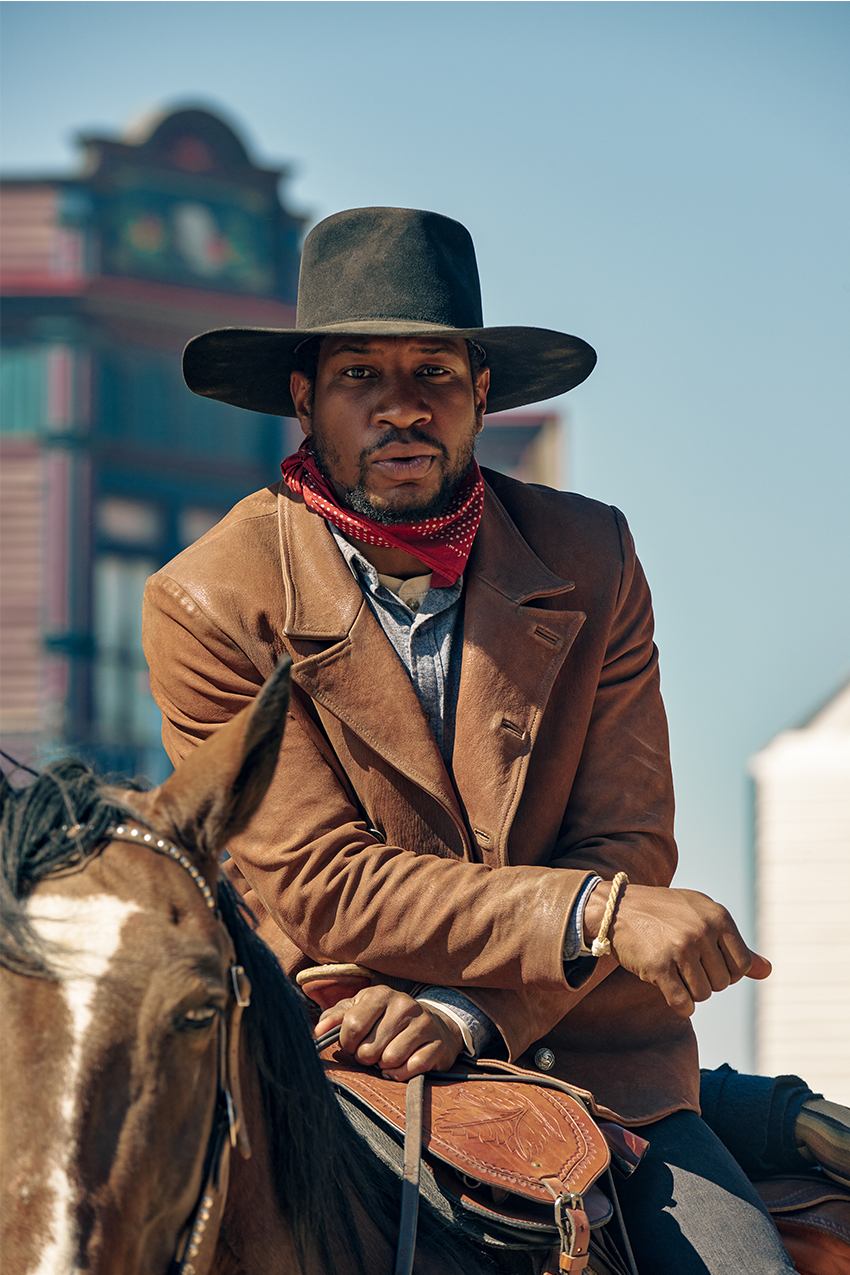
This film has a star-studded cast (from Idris Elba to Lakeith Smith). What was it like to work with them to create costumes for their characters?
It was absolutely a collaboration. Jonathan Majors (playing Nat Love) was involved in all aspects of his character—including his costume. I shared references with him. He came in and we tried different samples and pieces until we sort of got what we felt was a good space and direction. I was fortunate to have had him early and to be able to workshop every aspect of the costumes—from working with the gun wrangler to ensure he felt comfortable to working with our hat builder to make the perfect cowboy hat. It was a testament to our team that by the end of the film, Majors liked his costume so much that he walked off the set in his entire getup. And even the other incredible talent, like Lakeith Smith. It was his first time wearing Western clothing on set. He’d never worn cowboy clothing before, but he fell in love with it.
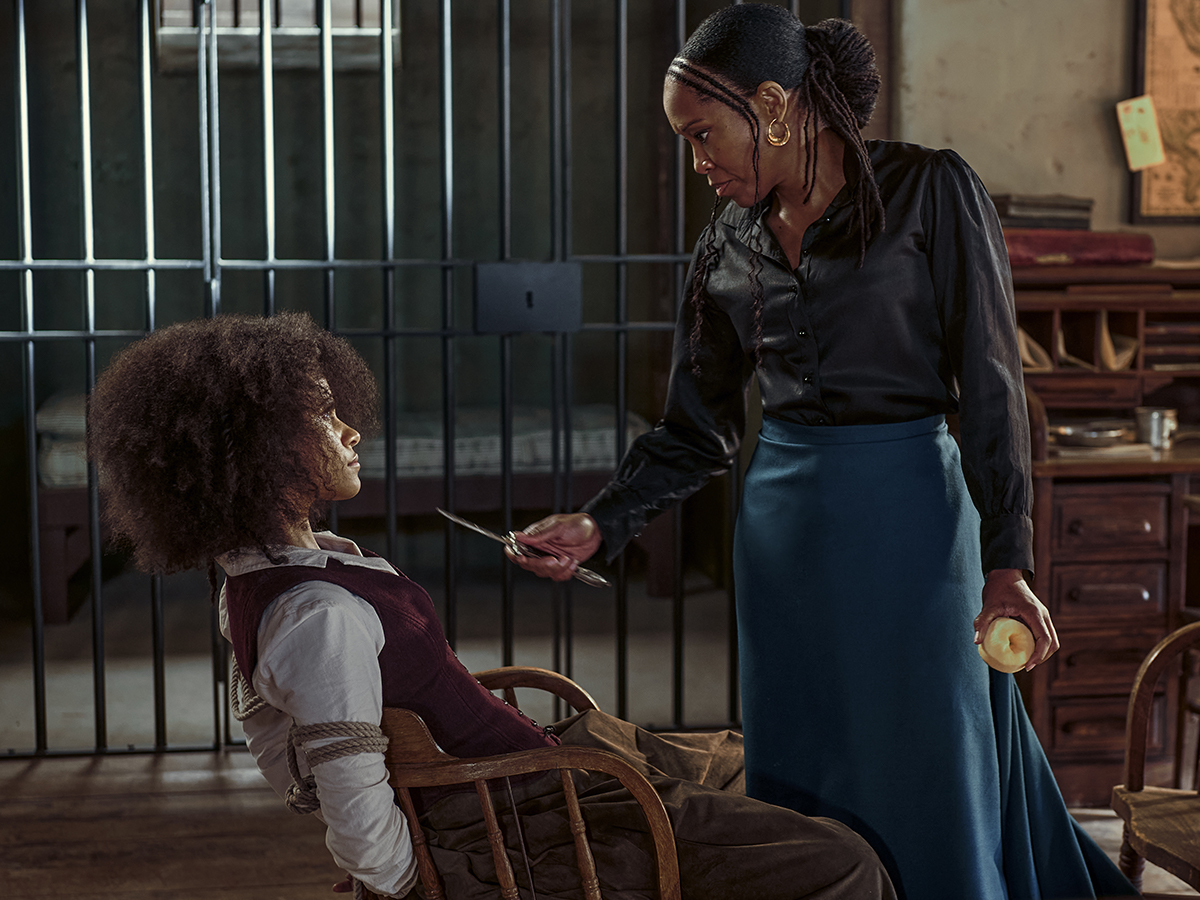
The most surprising thing about this film is how much the leading actresses Regina King, Zazie Beetz, and Danielle Deadwyler take the center screen. When creating Themes, did you want to challenge our ideas of not only what a cowboy is, but also gender norms?
The genius of this film is that Jeymes Samuel and Boaz Yakin wrote their characters to be strong women. There’s a line within the movie from Trudy, played by Regina King, and she says, "Who do you think you’re talking to? I am this town.” So it was a given that these women were powerhouses, and it’s not a stretch—it was a fact. Before industrialization and during this film, it was customary for women to be equal to men in that regard. If someone’s husband owned a farm or had gone to war, they more than likely had to put male attire on to be able to ride and to work the fields and the farm. Or to do business, sometimes they’d hide their womanhood or femininity to, you know, pass as a man by dressing a specific way to be taken seriously and overt the male gaze. So that consciousness was very much embedded within the script, and it allowed me just to be able to reflect that reality through the clothing. I wanted to remember that their strength came from their characters, not their clothes, and to pair practicality with feminine touches.
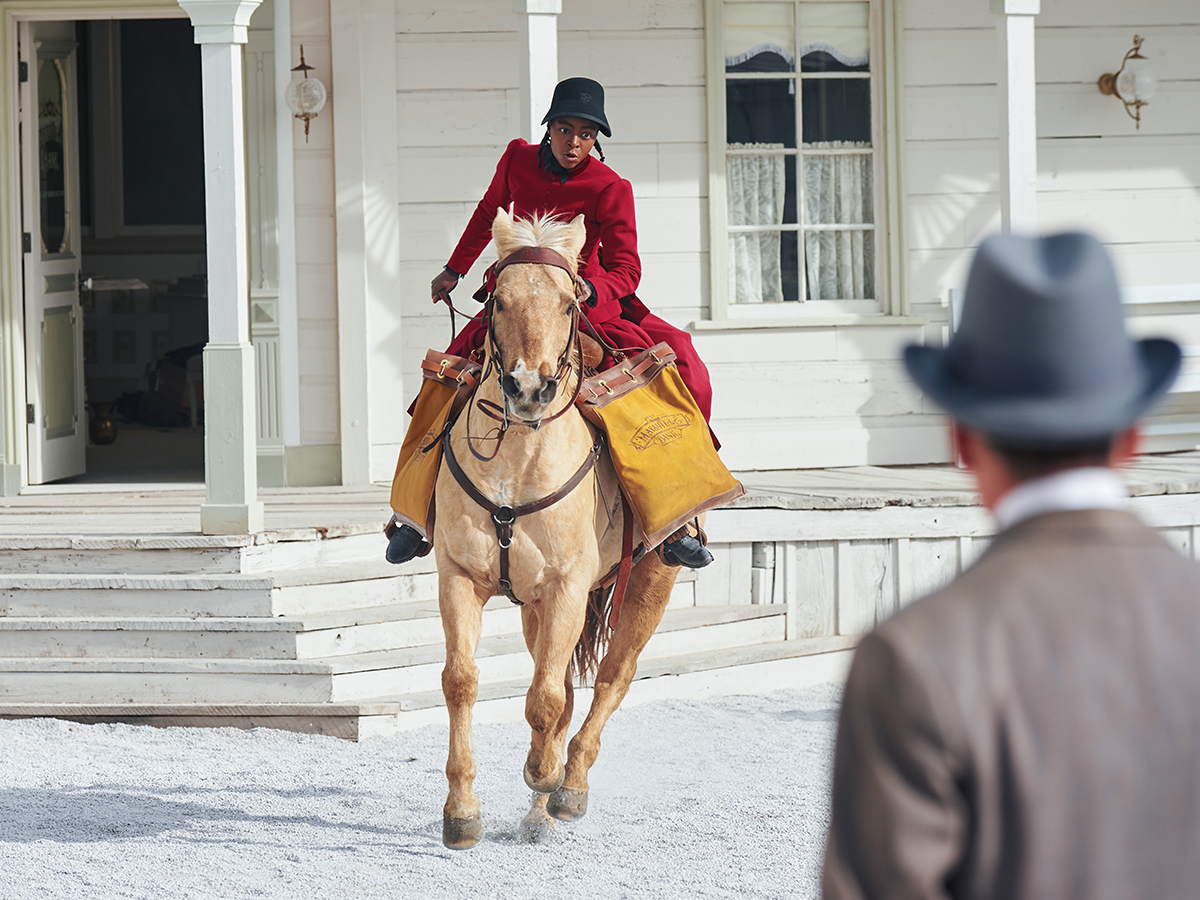
Do you feel like this period was more about dressing for utilitarianism or the freedom of expression outside of respectability politics?
I think so. Jeymes calls this film "The New West” because if we looked at this town through a different lens this time, it might have existed if we knew about it. And if it did exist, we got to imagine how these people would dress. It’s not a stretch to say that at some point in time, a town like this—or Black people dressed in their finest gear—existed because it happened. I think the criticism around this film has been, "Well, it’s not history,” but in truth, it may not be your history, but that doesn’t mean it’s not history. There’s a wealth of imagery, information, and stories about the Black, Indigenous, Asian, and Latinx communities that exist, that you just haven’t learned about yet. And that’s what’s so poignant about this film. It shows that these people did exist, and these towns did too, but they were wiped off the map because of white backlash and land-stealing. Their stories, their history exists—it just hasn’t been told yet.
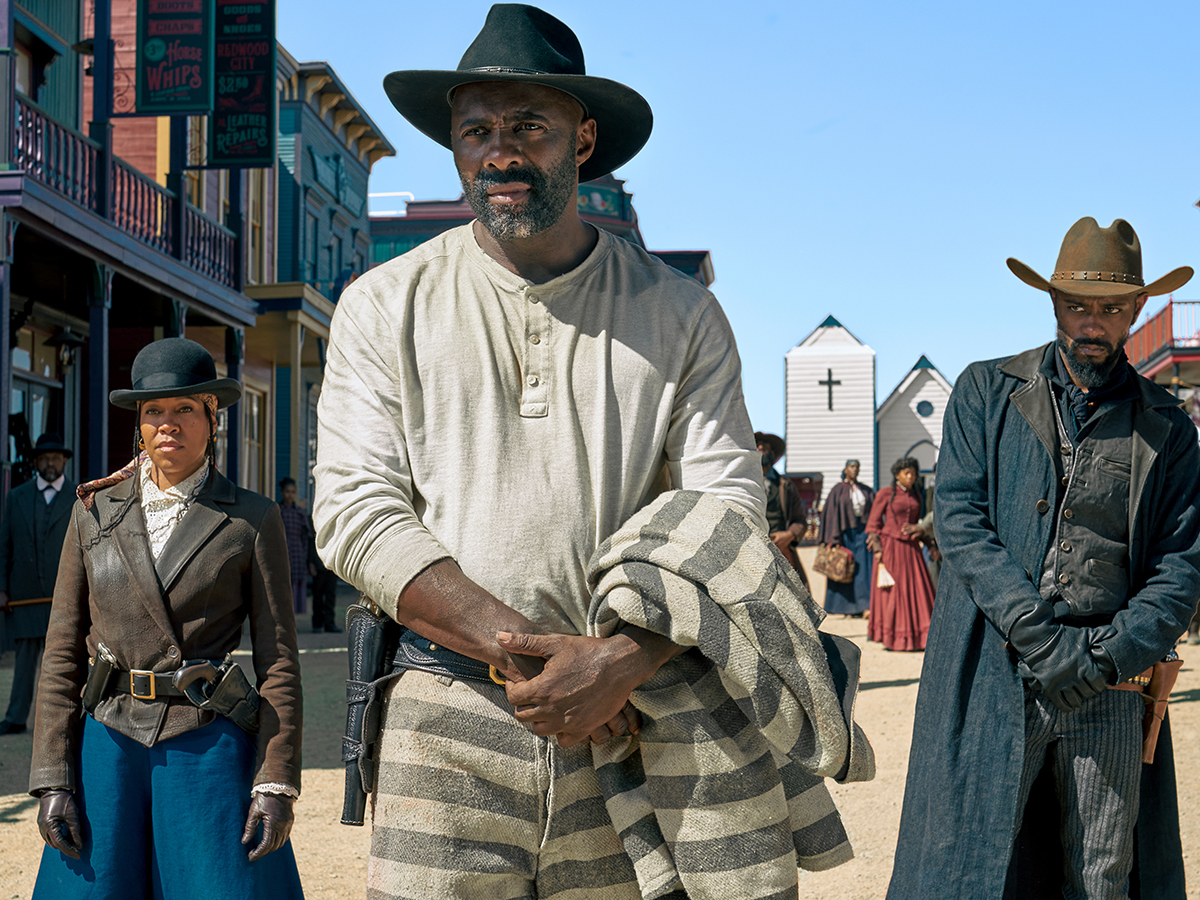
Since this was your first time working on a Western, what do you feel you've taken away from this film?
Just so much. I'm so proud, and I’m so proud of Jeymes. We've been on this journey for a long time; we started working on this film in 2019. So to be celebrating the success of this movie, it's all come full circle. And it's like, you know, my baby’s now grown up, and I'm proud of what they've become. I think of fellow costume designer Ruth E. Carter behind Black Panther, and I can imagine how she felt when she shared the world she created and to see how people embraced her vision. And to see how people are embracing what we’ve done now in such a positive light, it’s heartwarming.
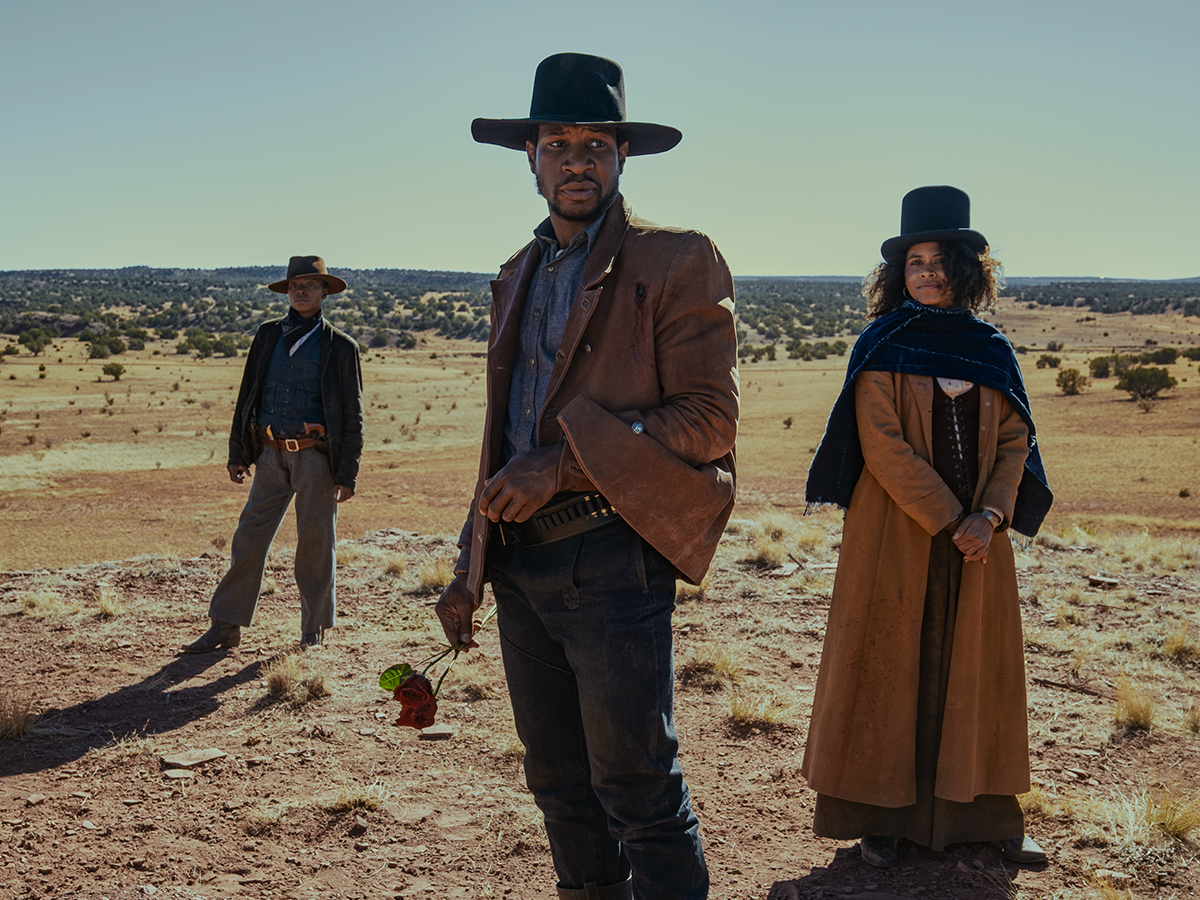
What do you hope people will take away from your work and the film?
I hope people look at it with open arms instead of critiquing what they feel is not natural. Why not just enjoy it? The word I think encapsulates this film is "possibilities.” This town may have existed in this format. These people could have existed; there’s so much we don’t know. I mean, how many Americans just learned about Tulsa, Oklahoma’s Black Wall Street? So how do we not know Redwood didn’t exist? There are limitless possibilities—not only what could have been, but what stories and images we have yet to discover.
Feeling inspired? Shop some Western-inspired pieces:
Next: Ashley Moore Is Embracing Her Fears
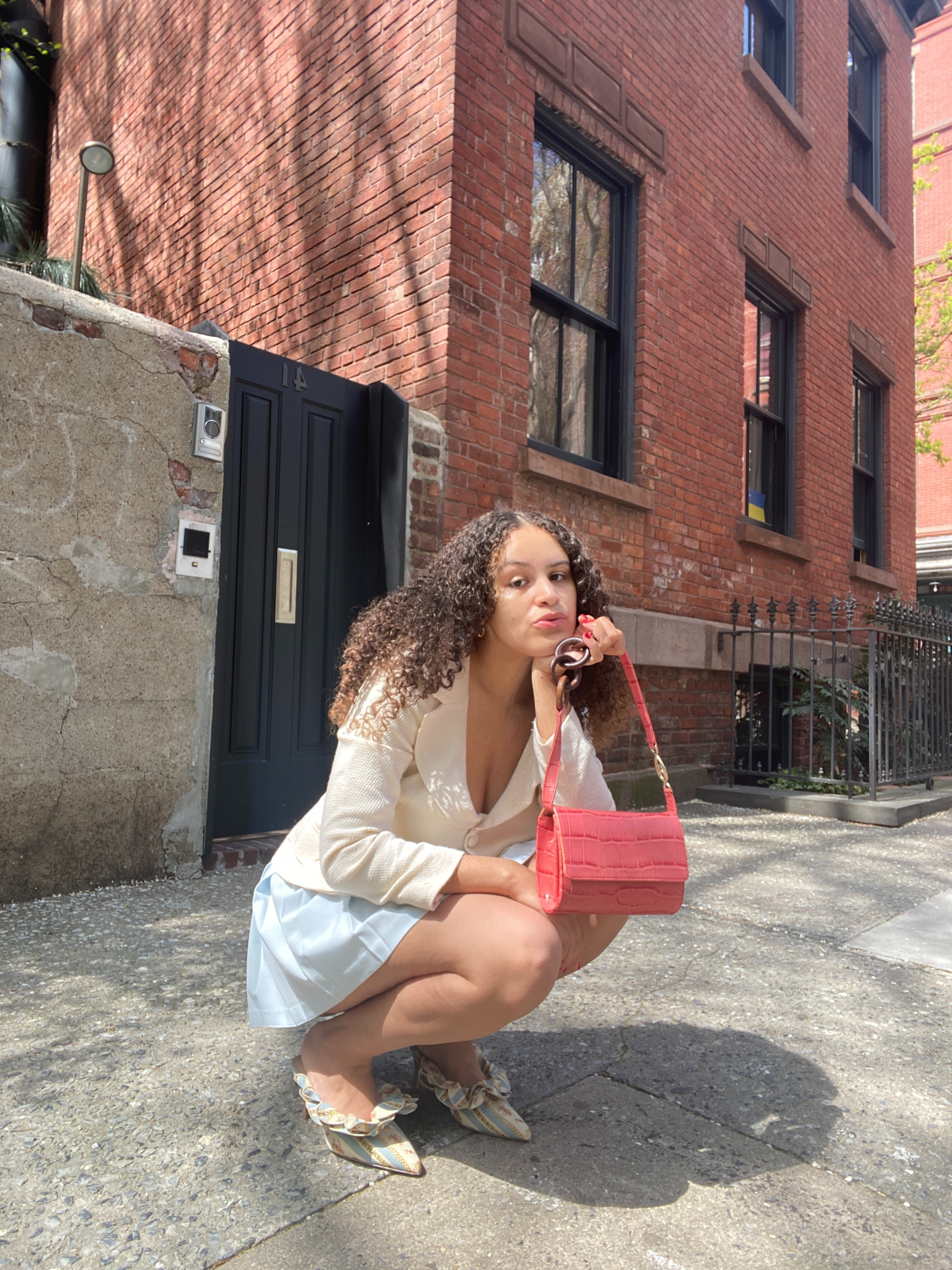
Jasmine Fox-Suliaman is a freelance writer and editor living in New York City. What began as a pastime (blogging on Tumblr) transformed into a lifelong passion for unveiling the connection between fashion and culture on the internet and in real life. Over the last decade, she's melded her extensive edit and social background to various on-staff positions at Who What Wear, MyDomaine, and Byrdie. More recently, she’s become a freelance contributor to other publications including Vogue, Editorialist, and The Cut. Off the clock, you can find her clutching her cell phone as she's constantly scrolling through TikTok and The RealReal, in search of the next cool thing.
